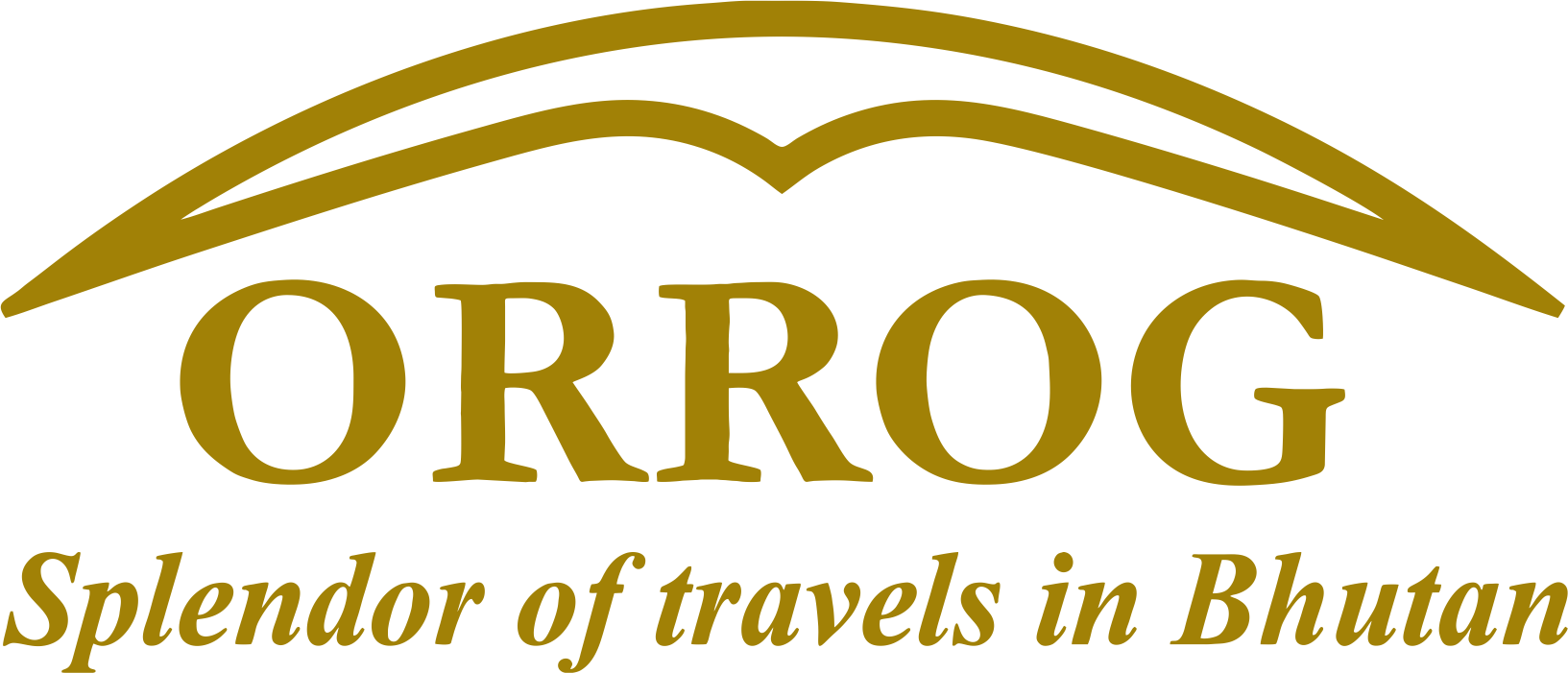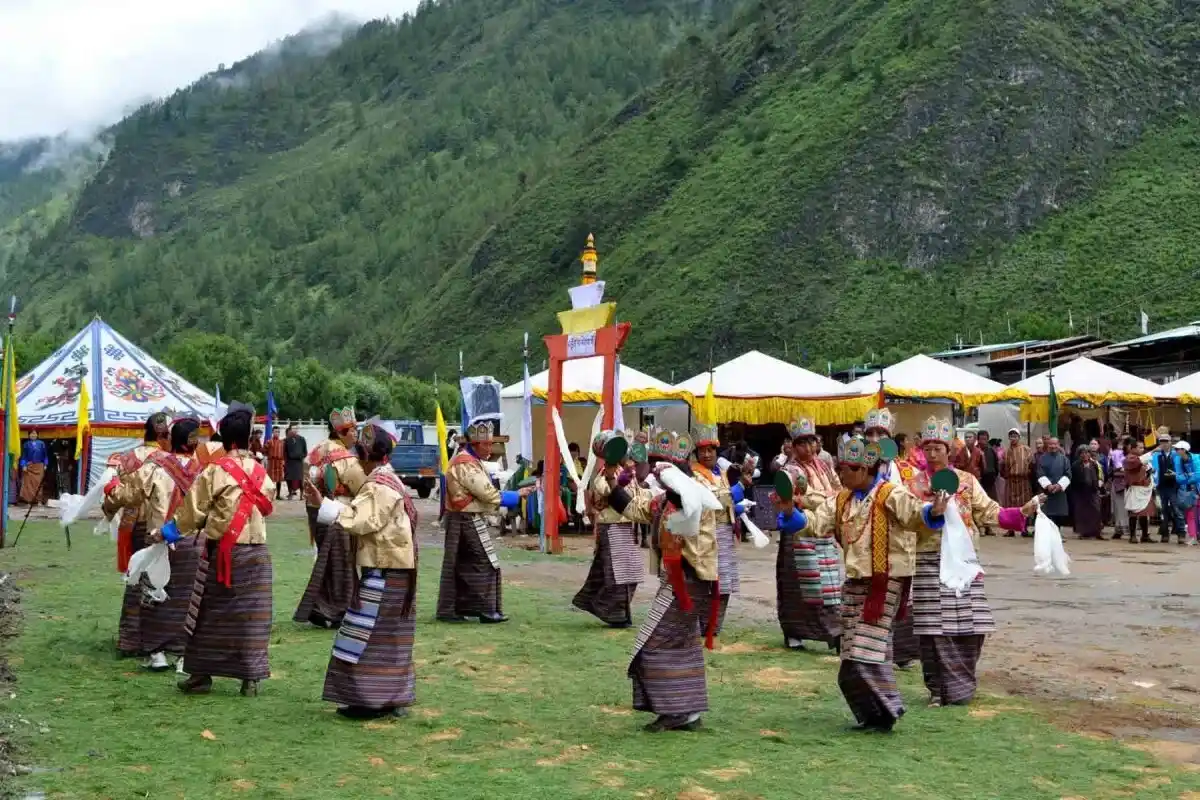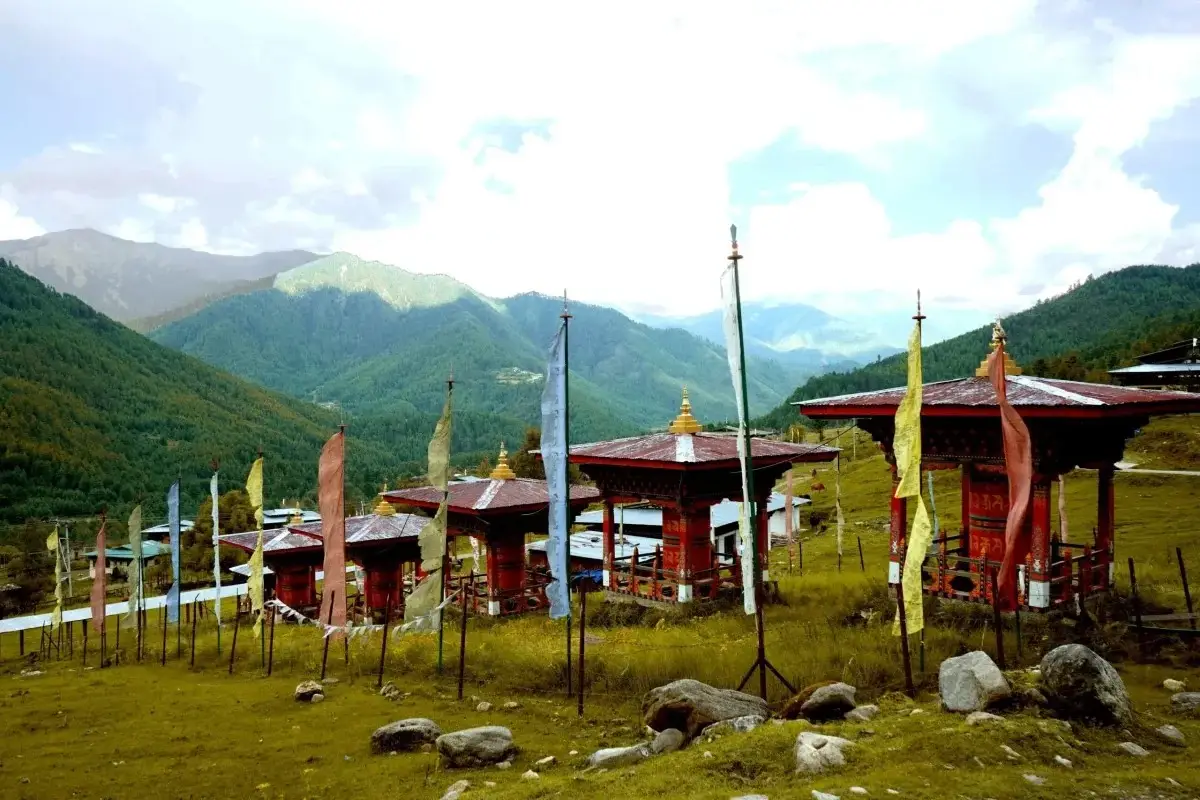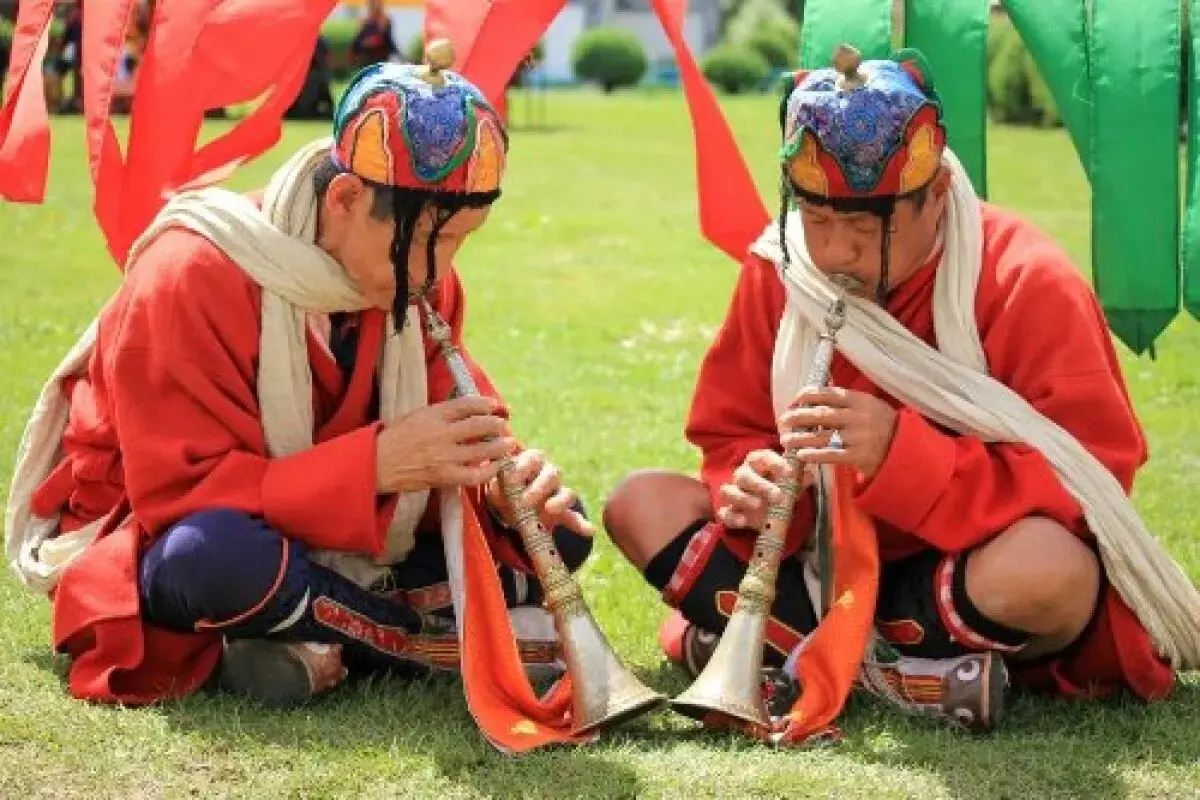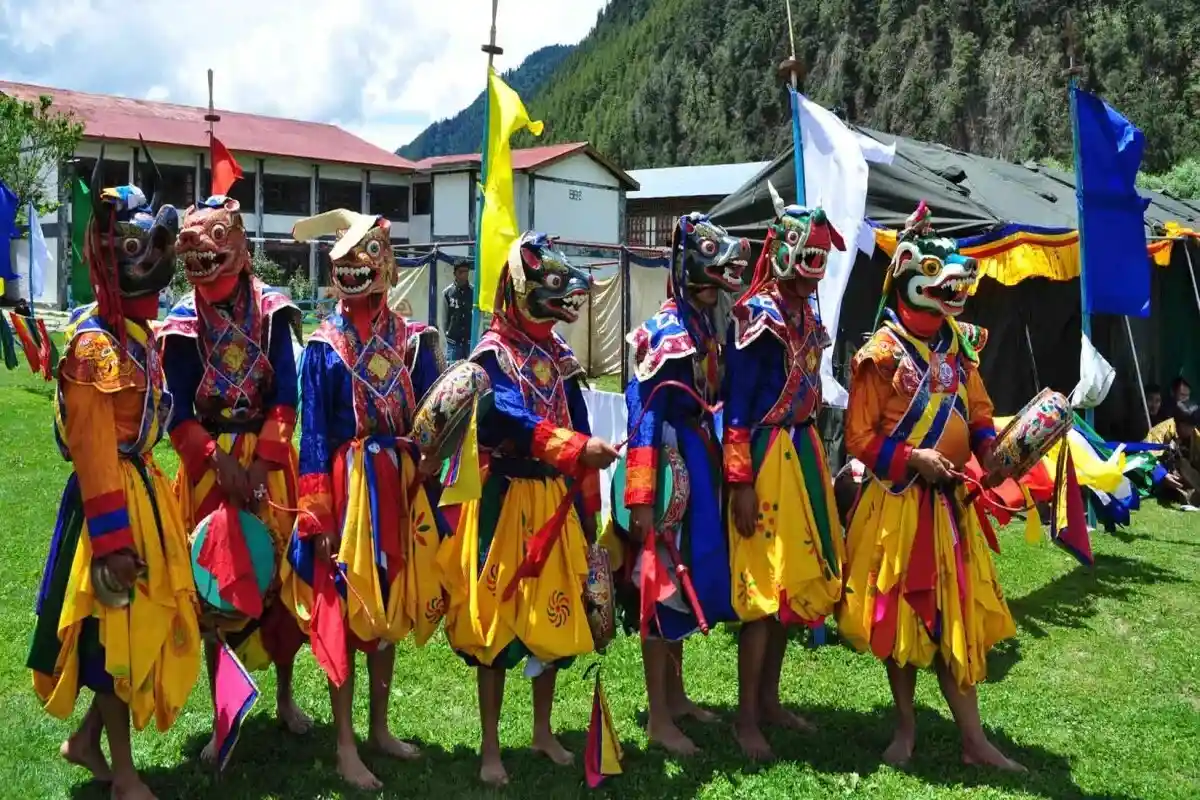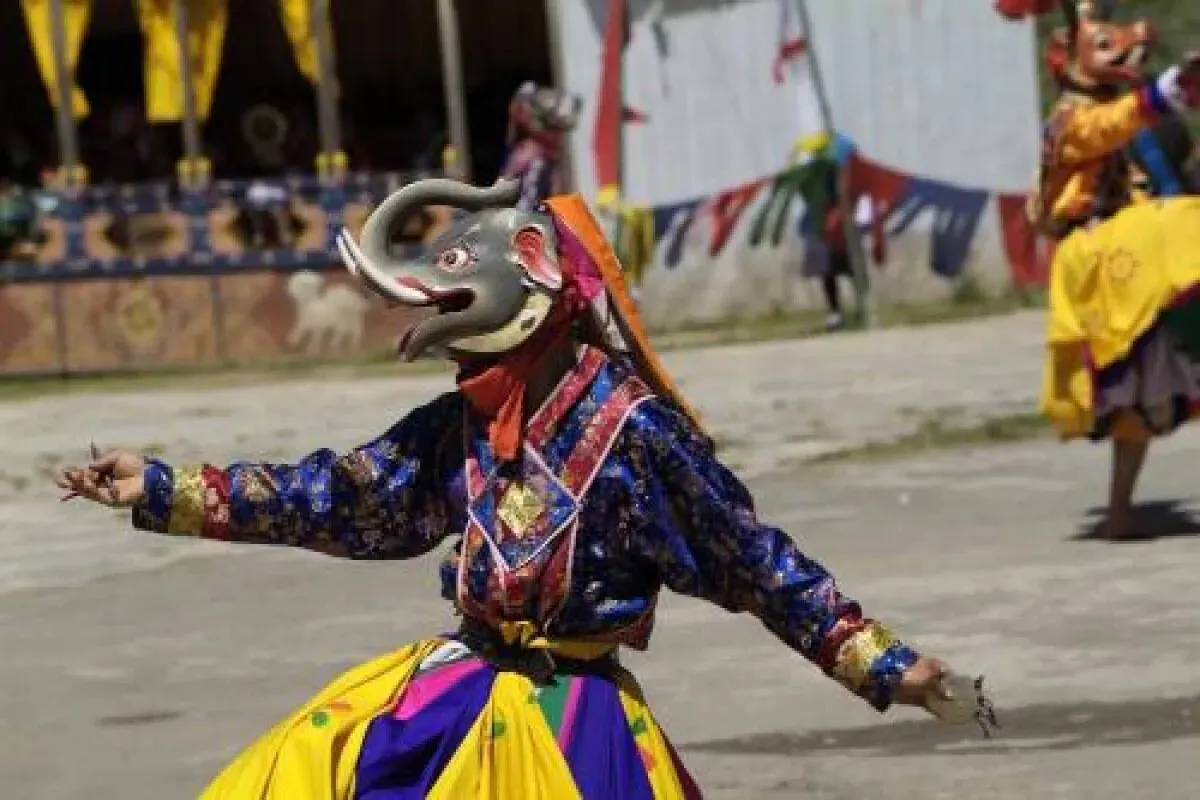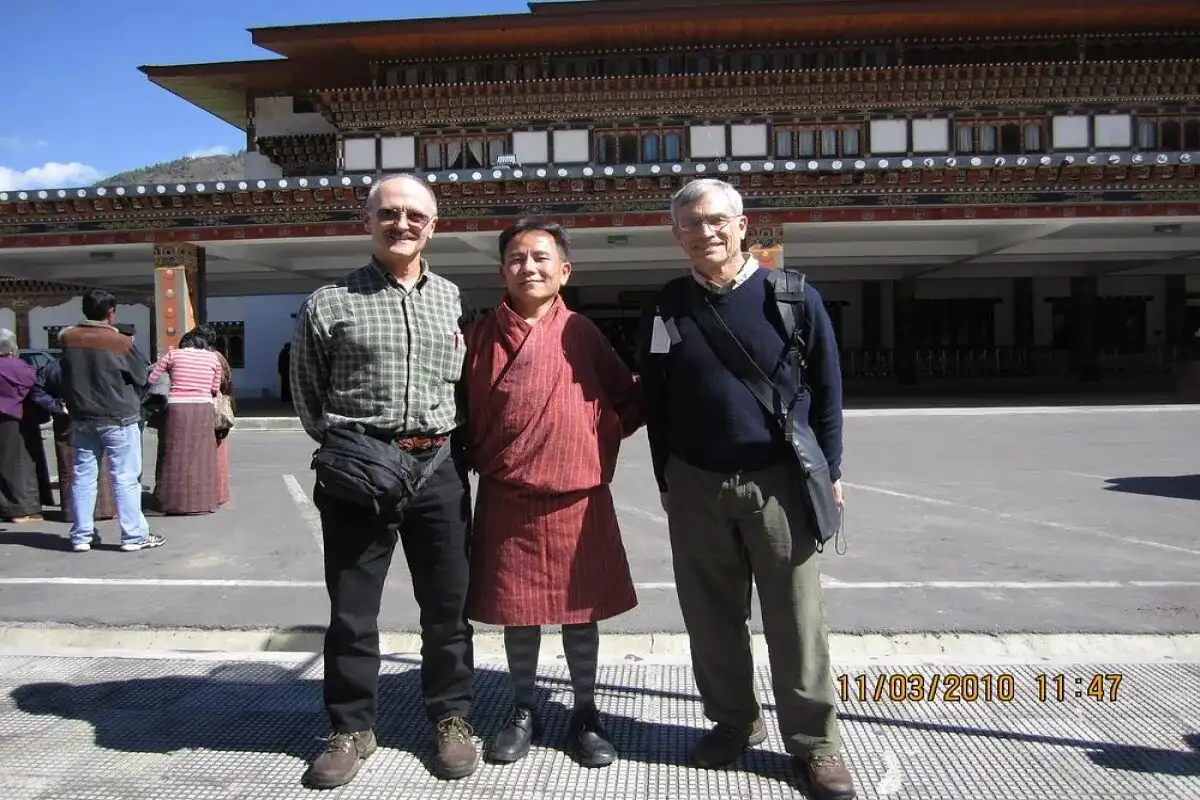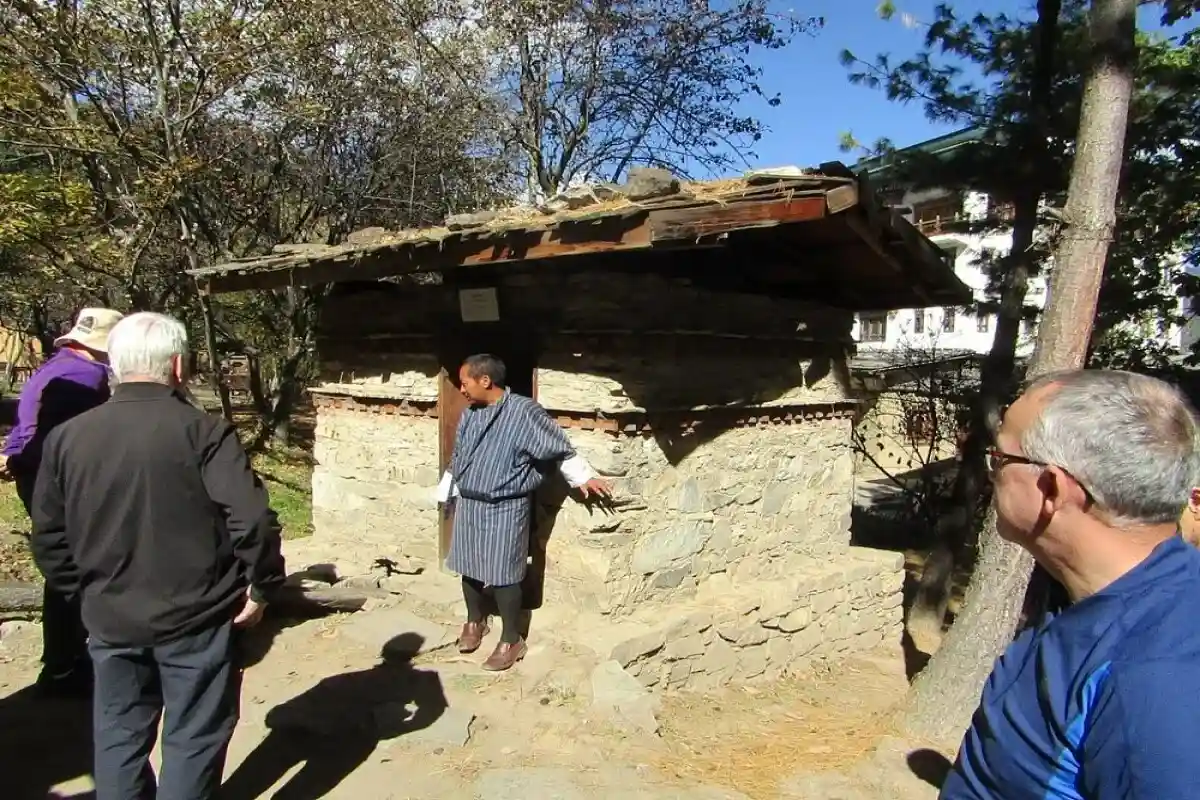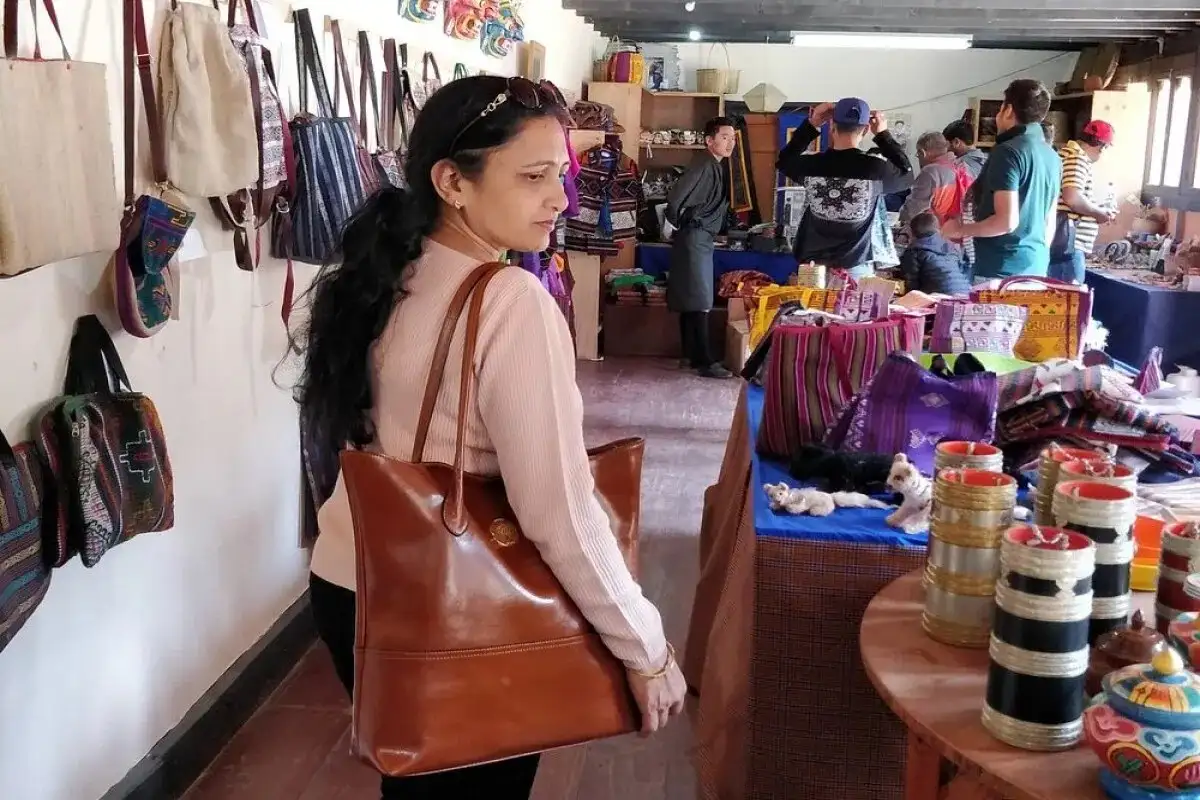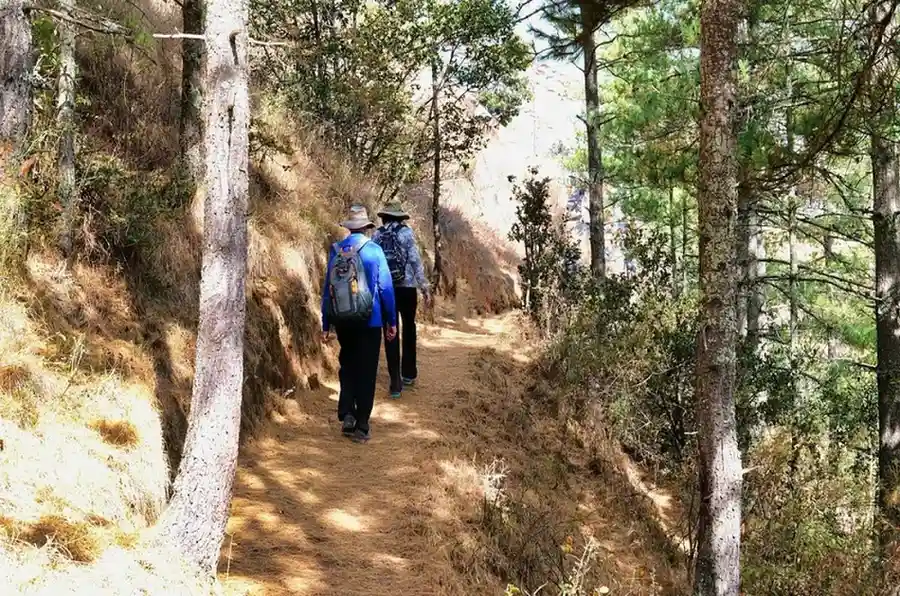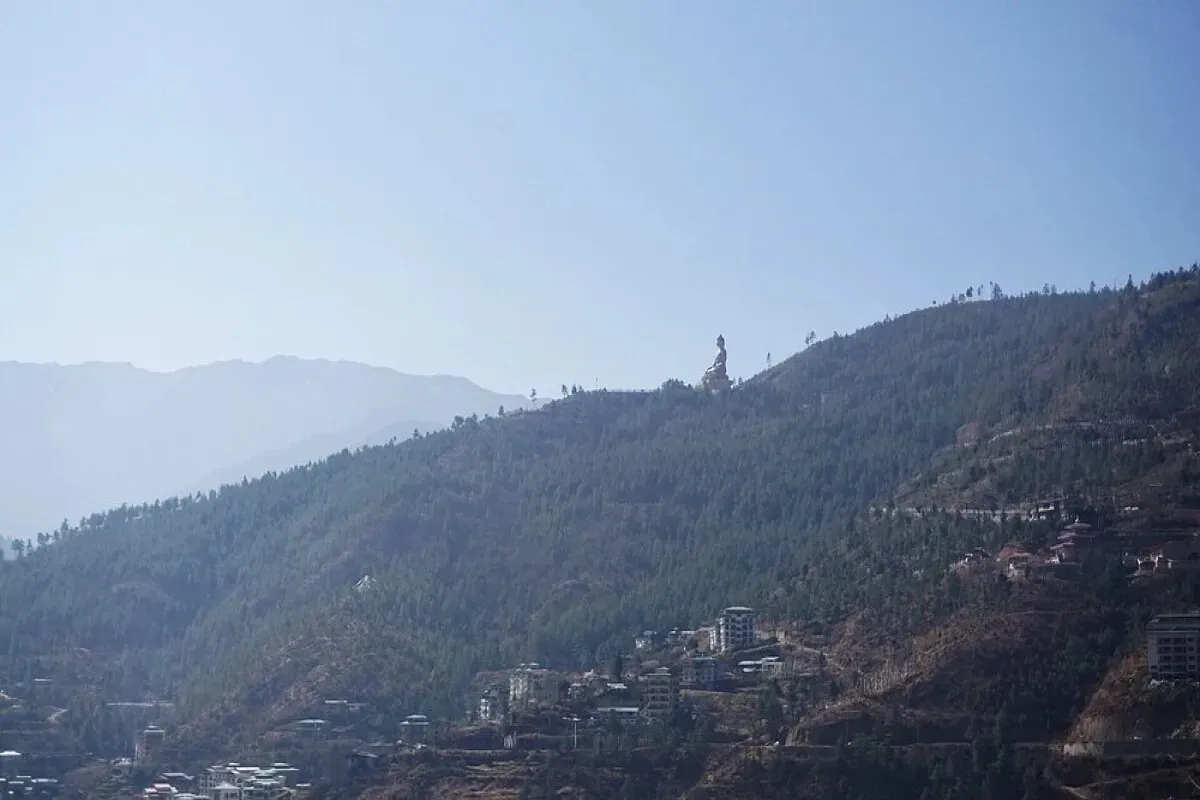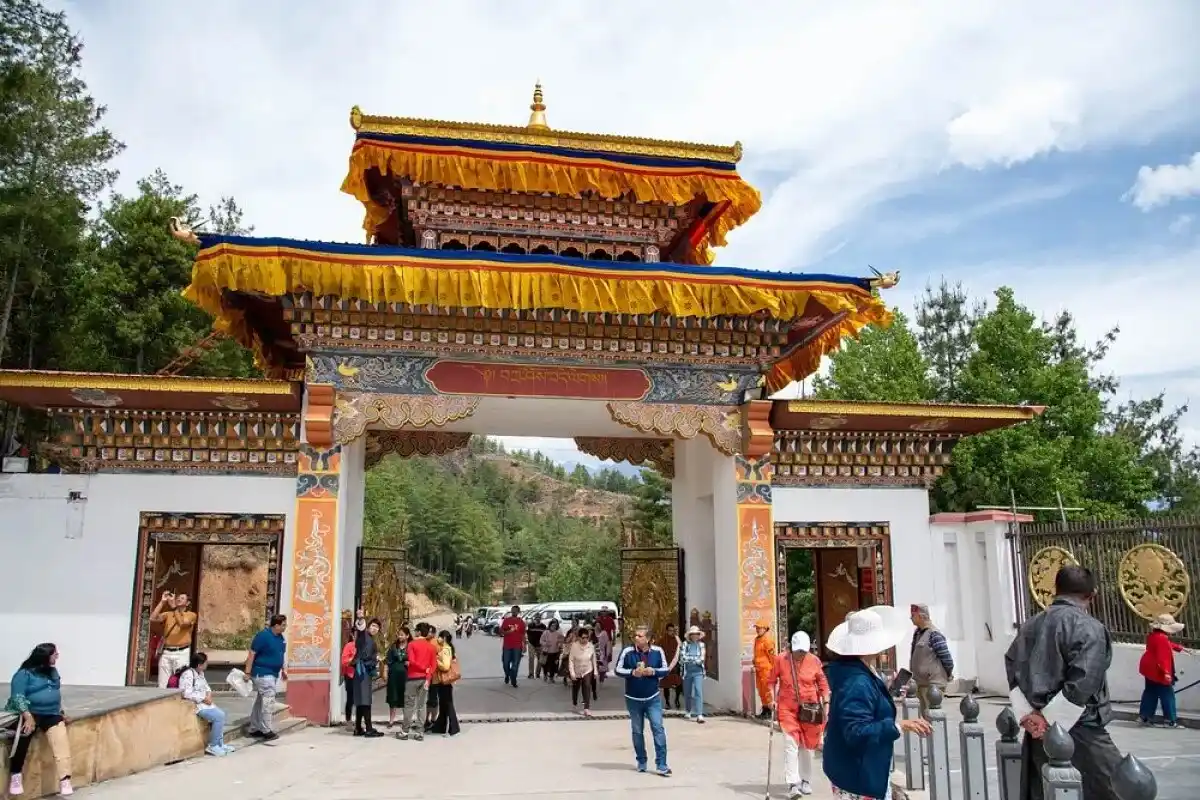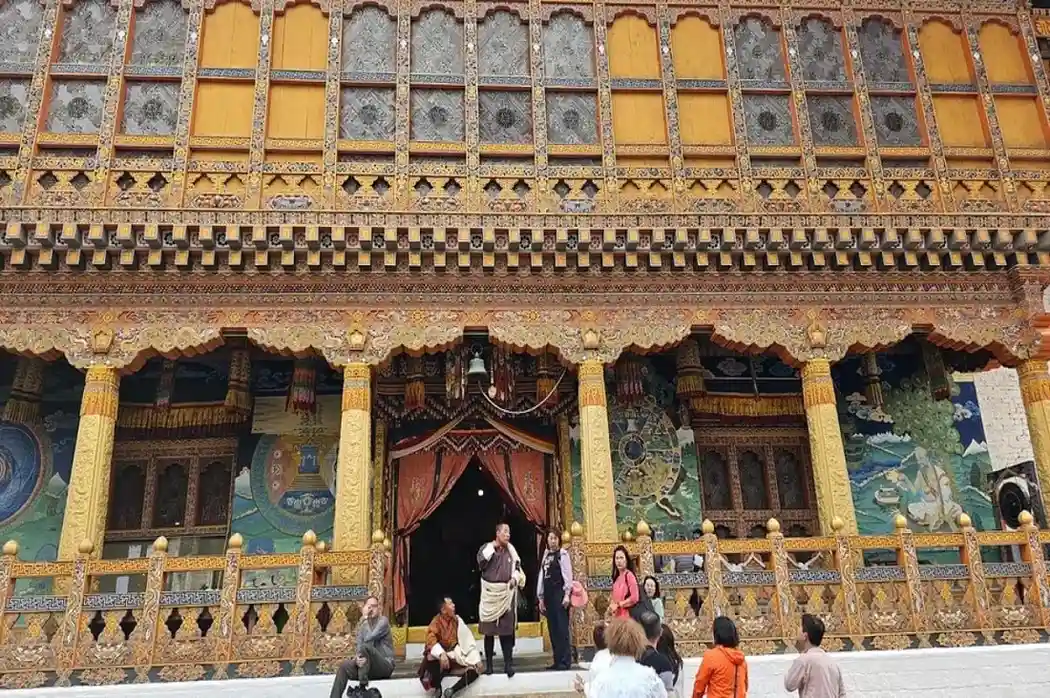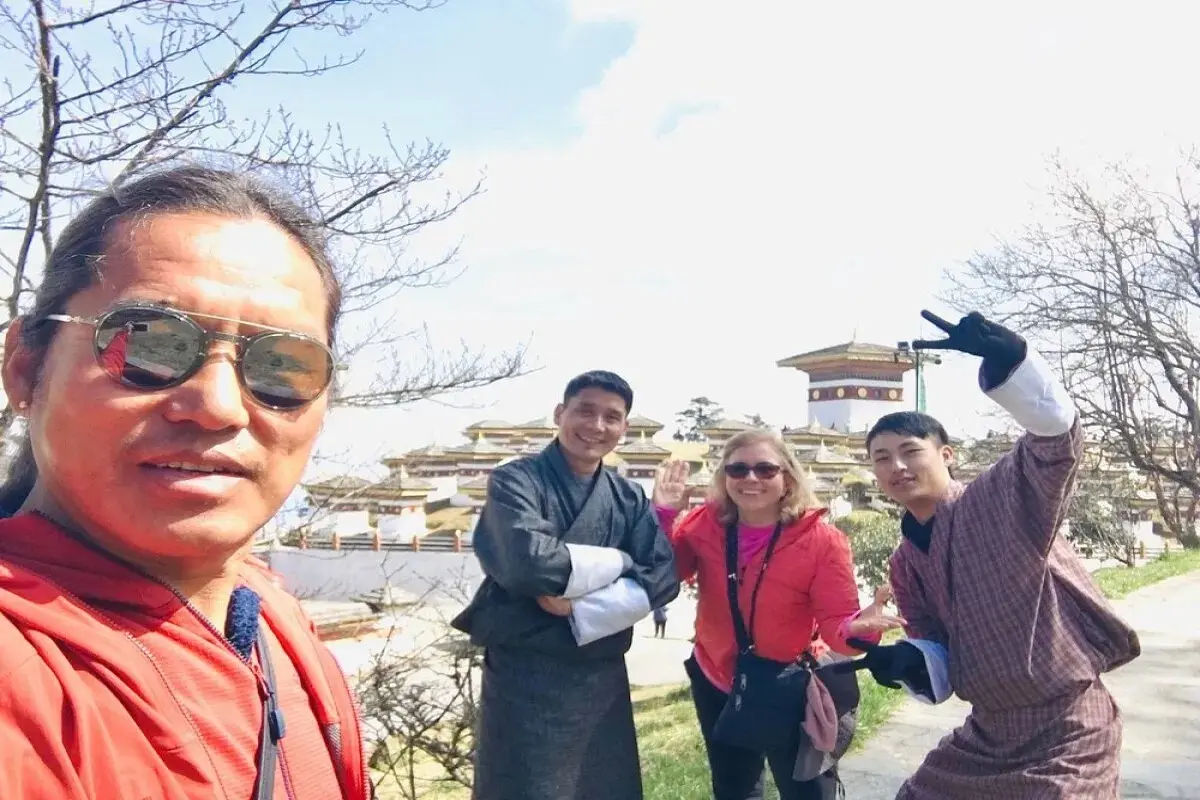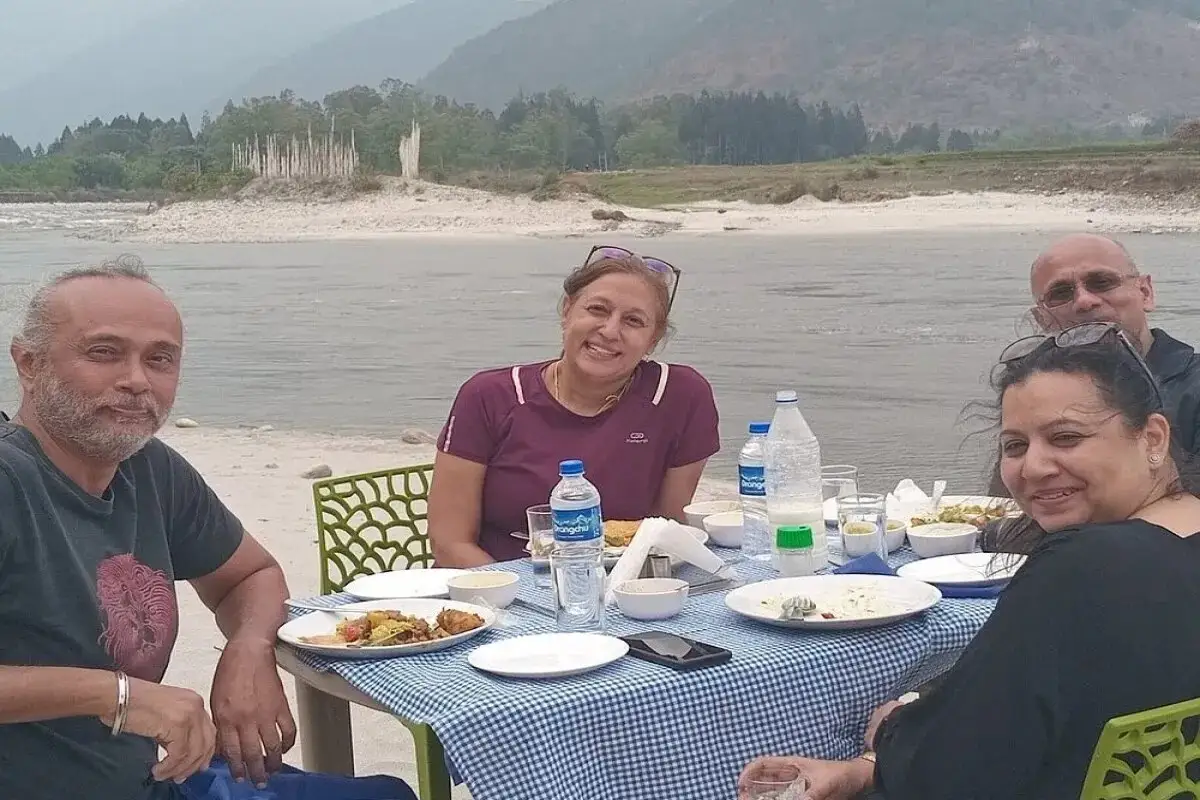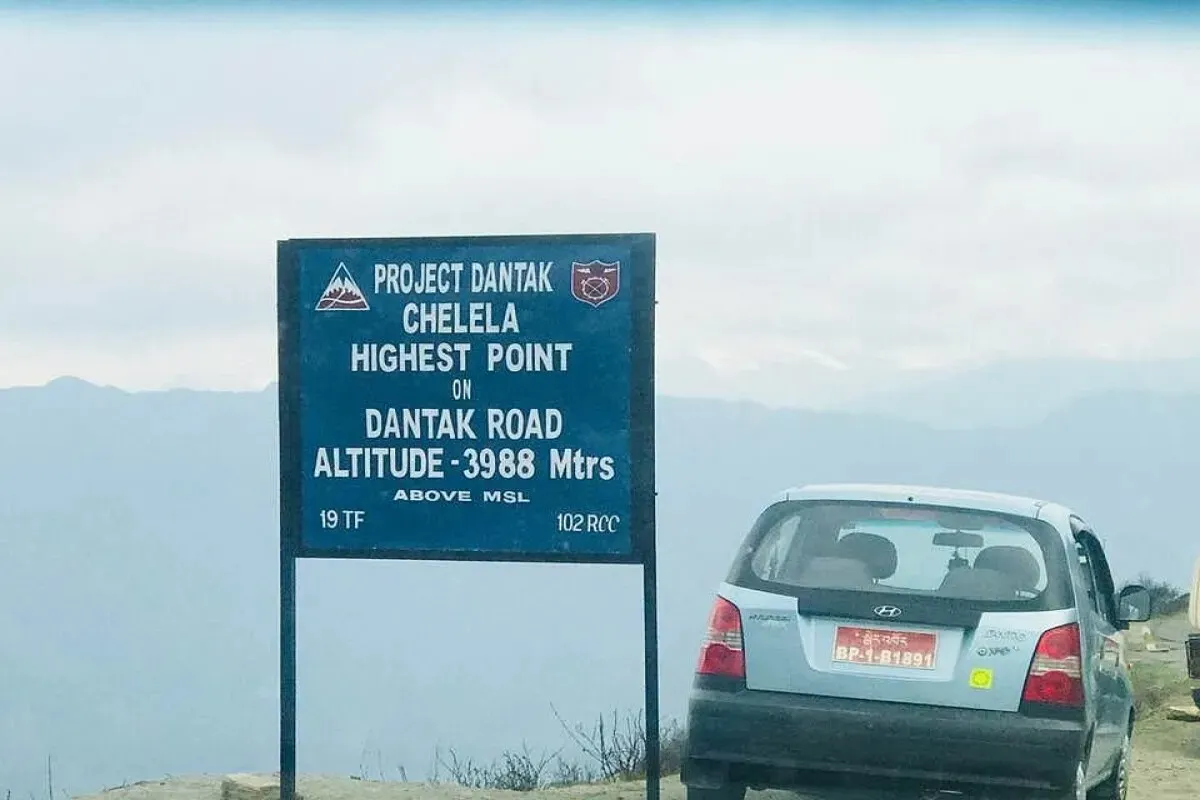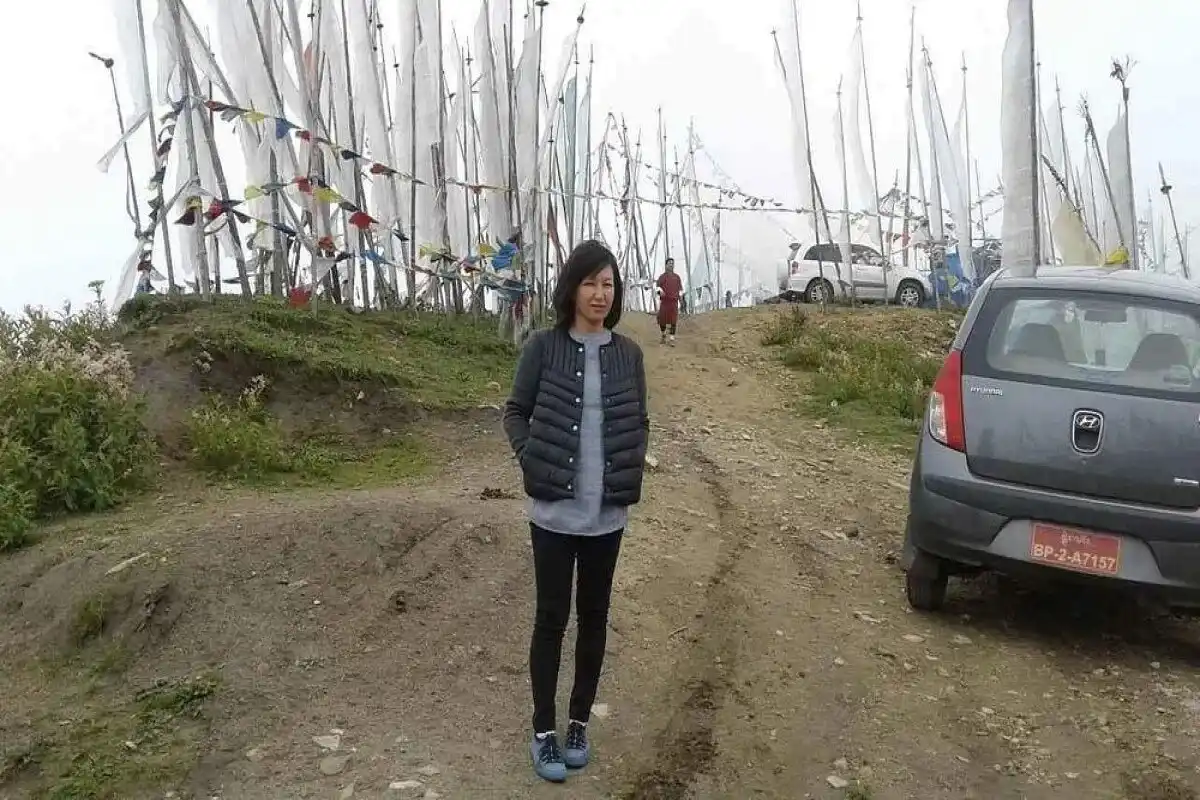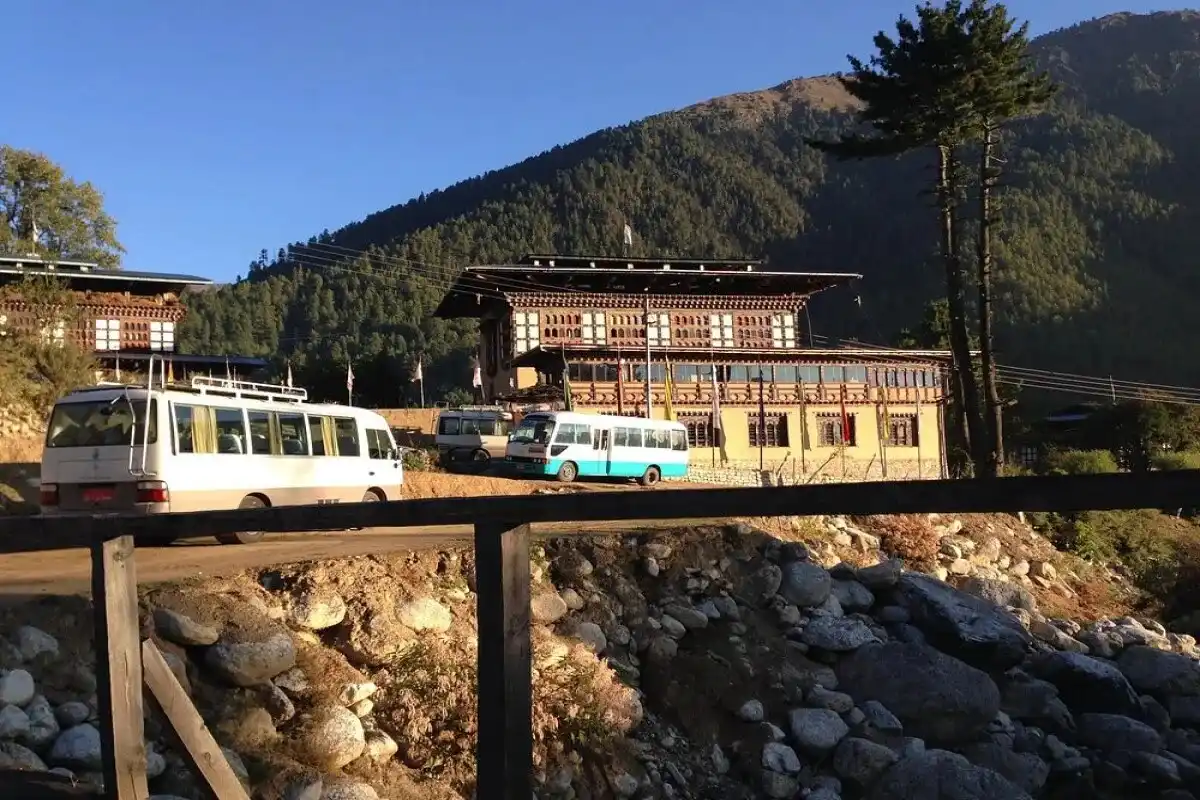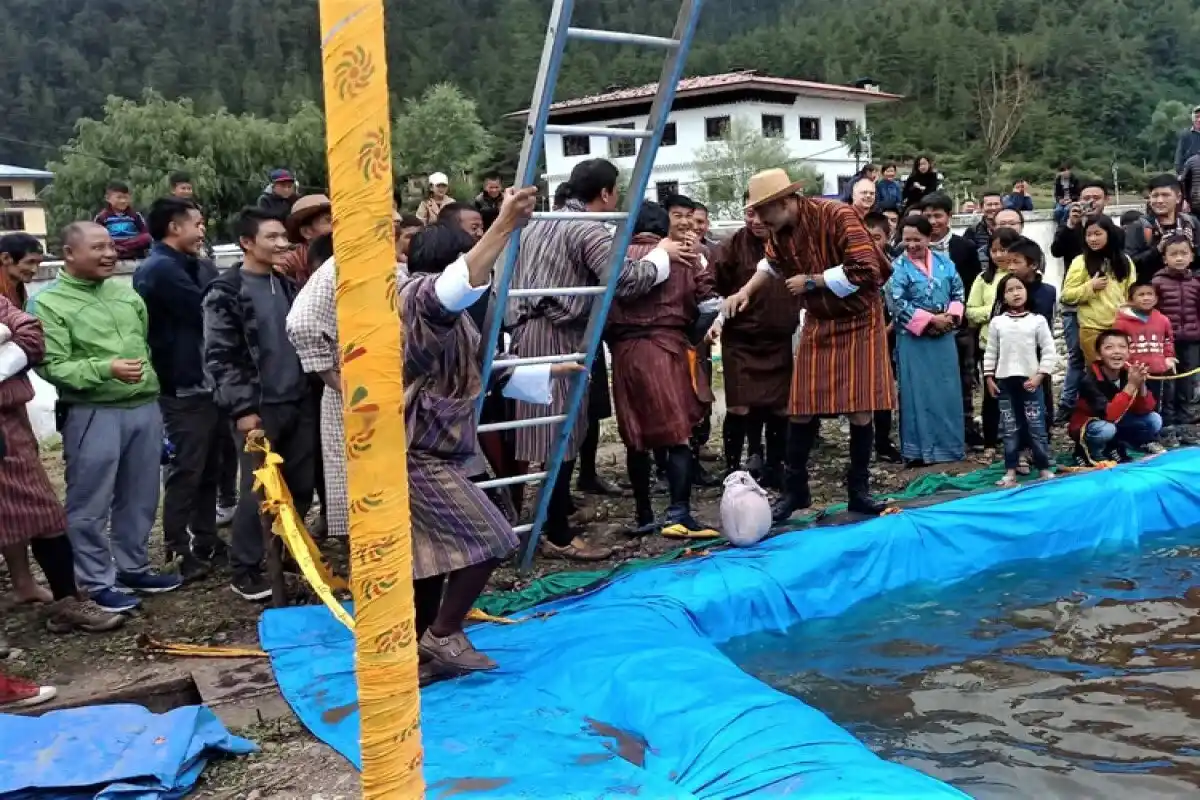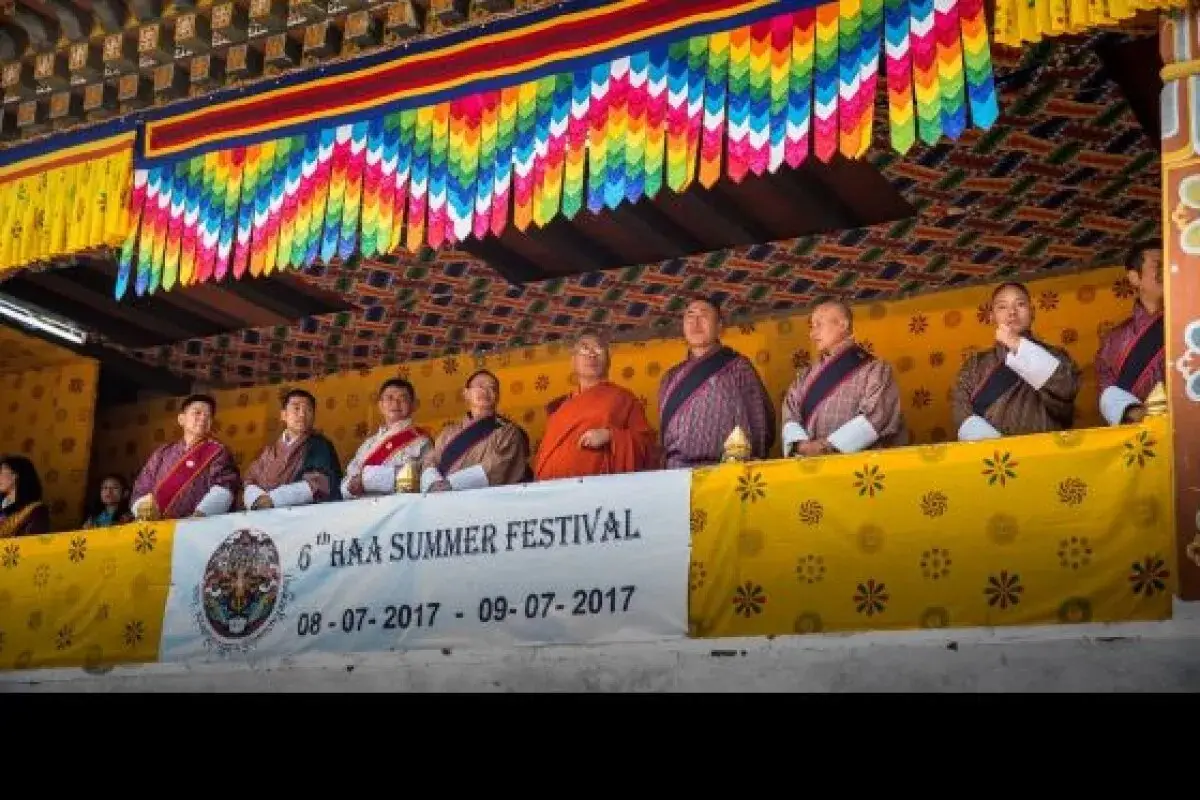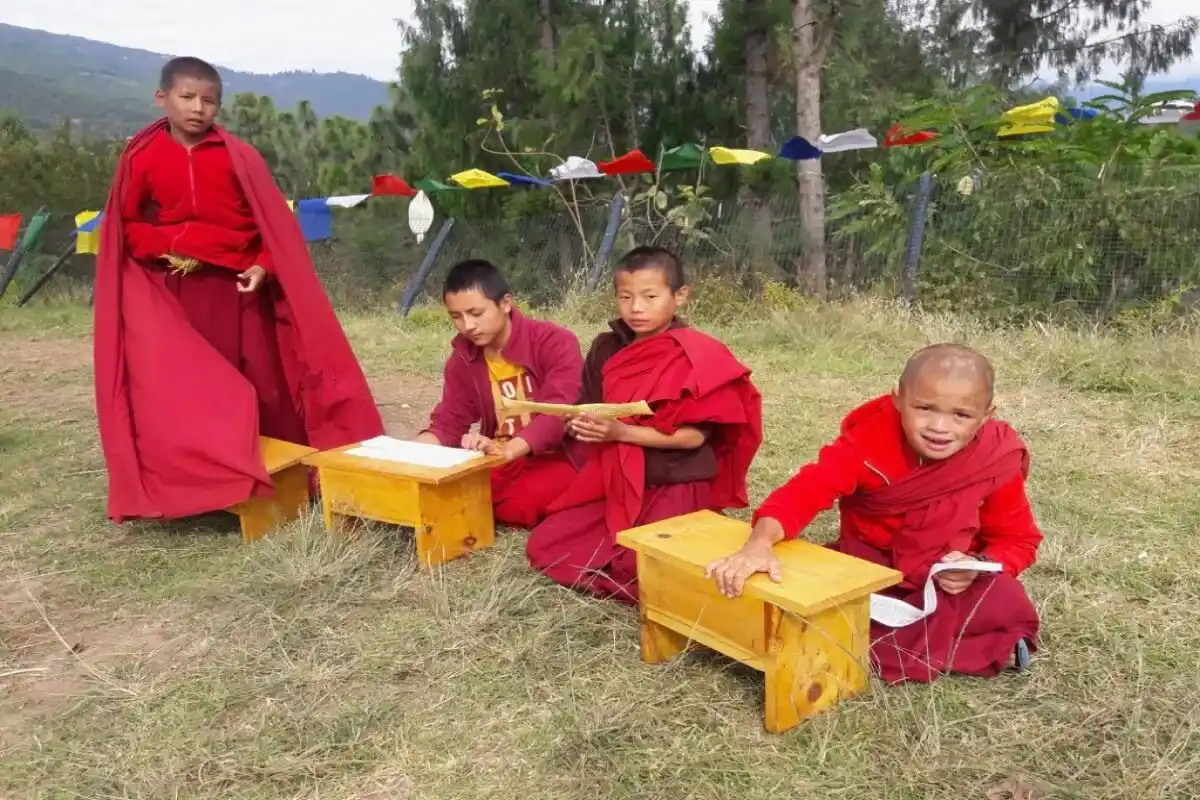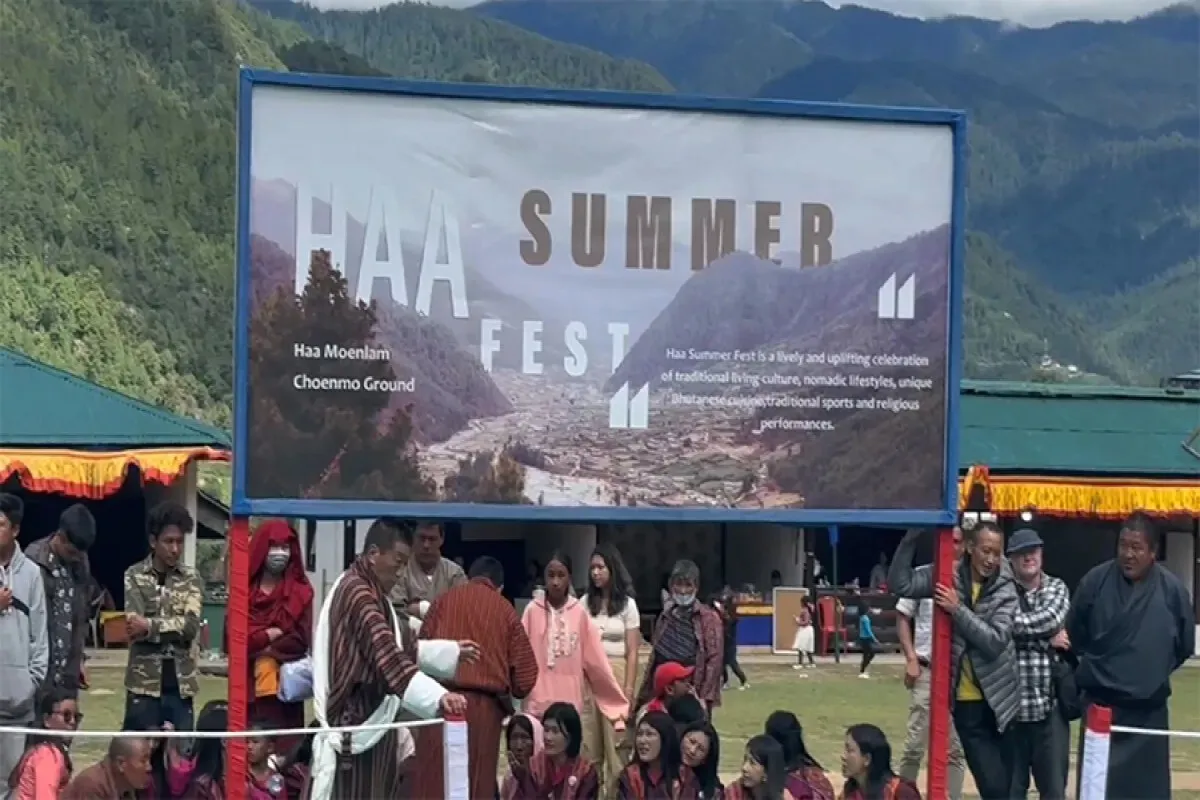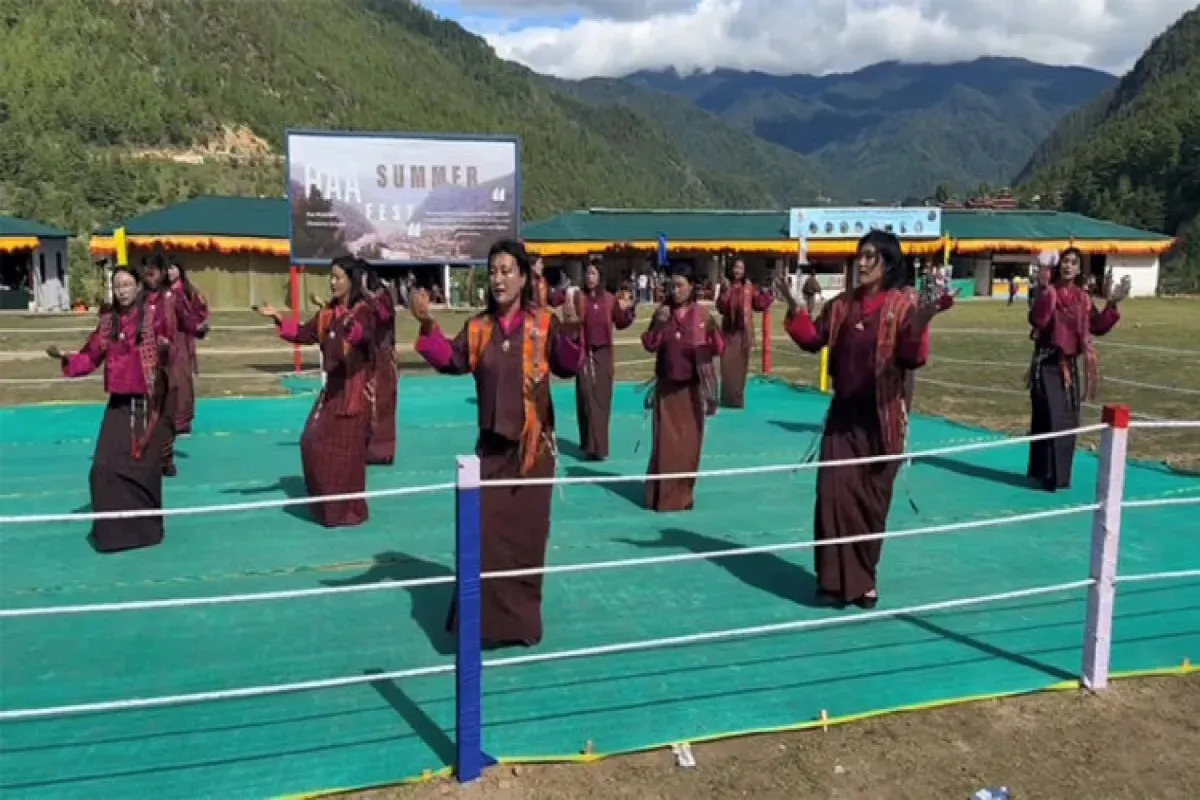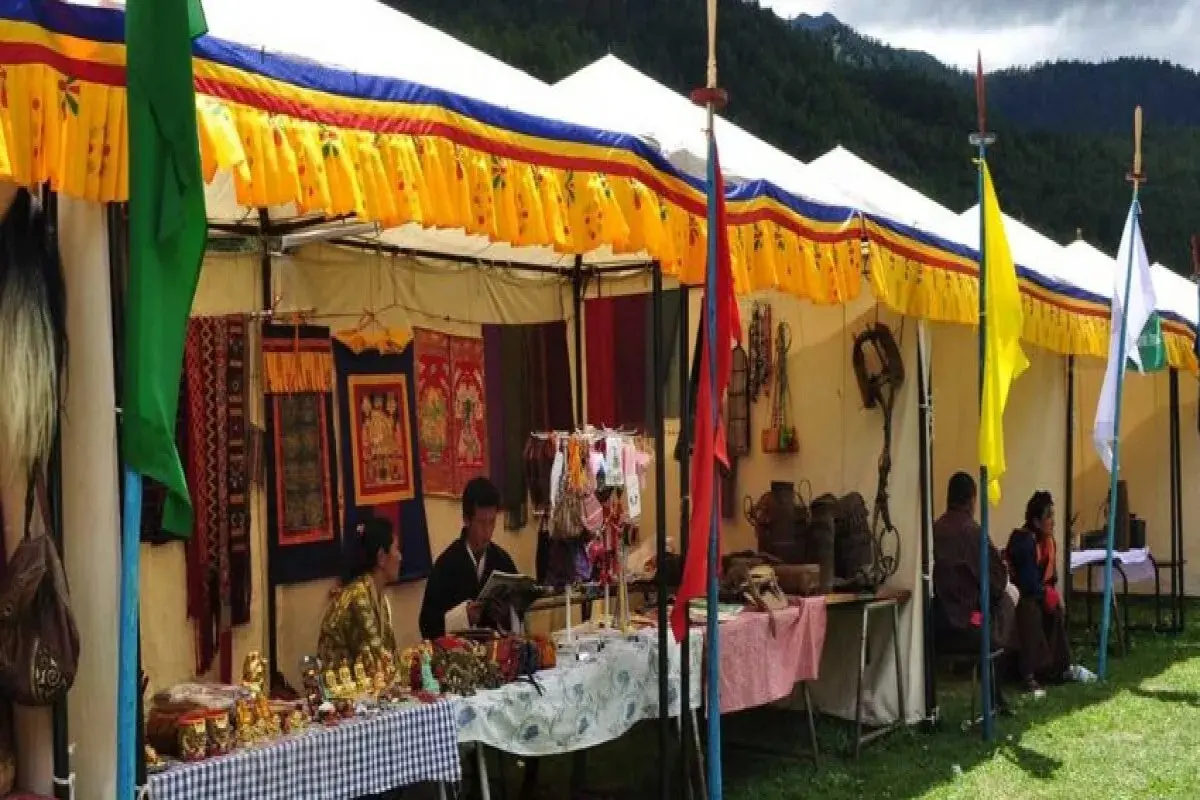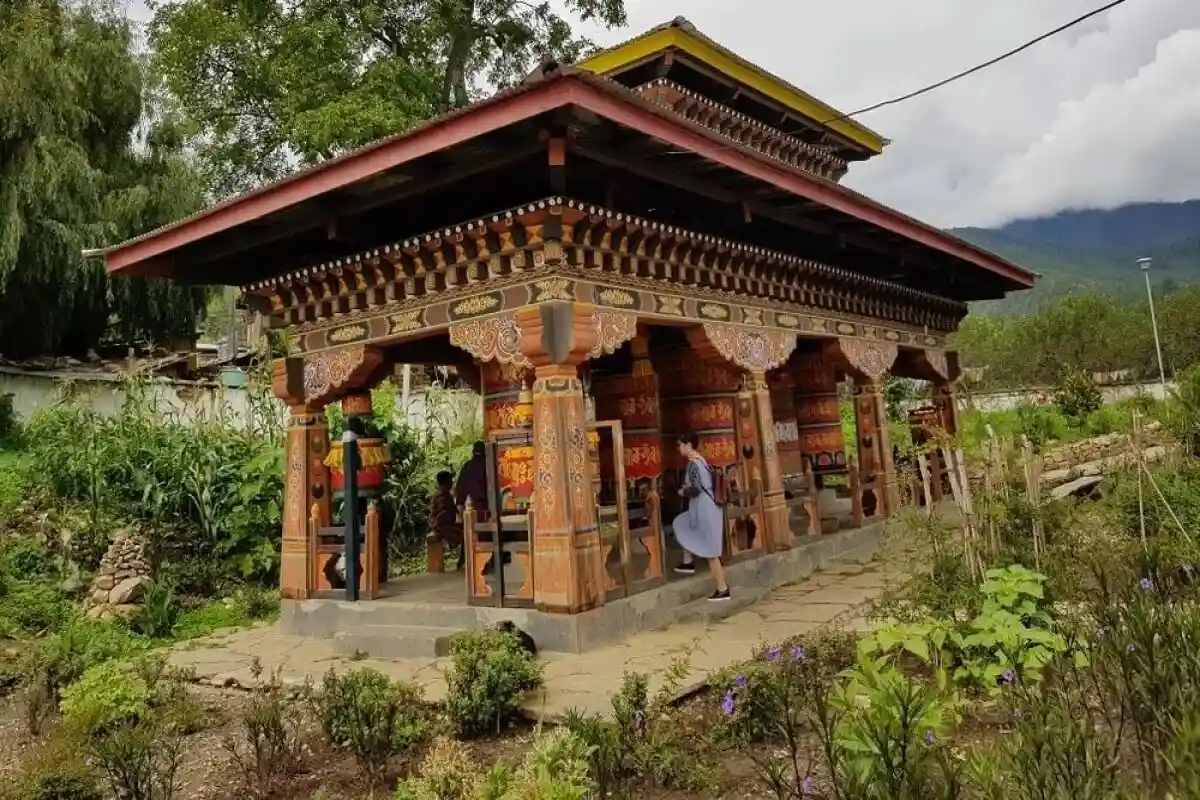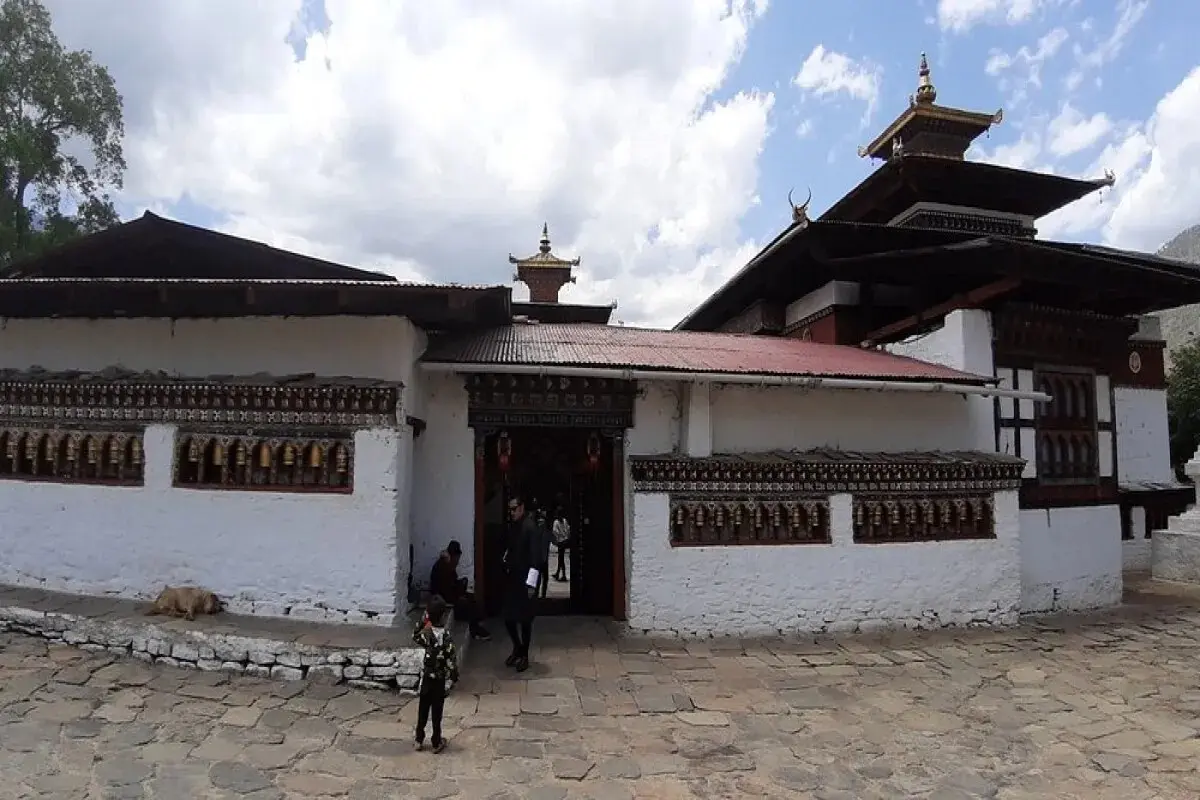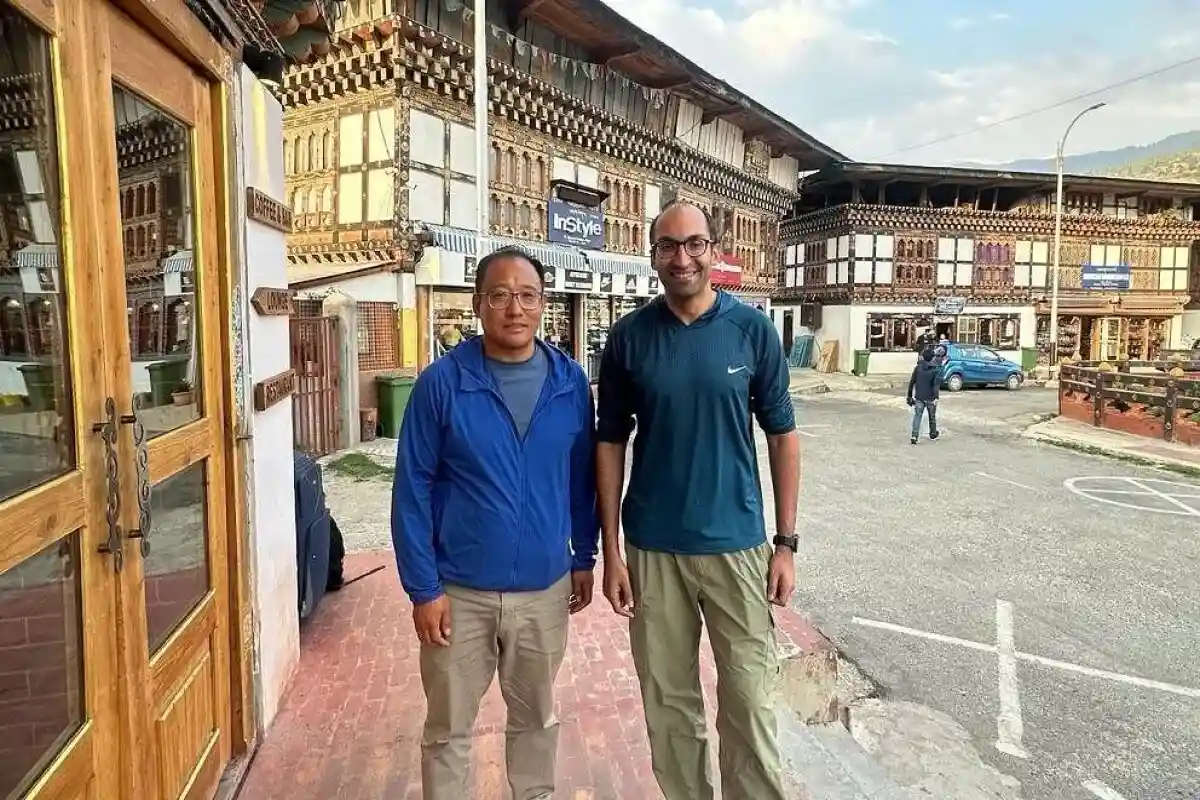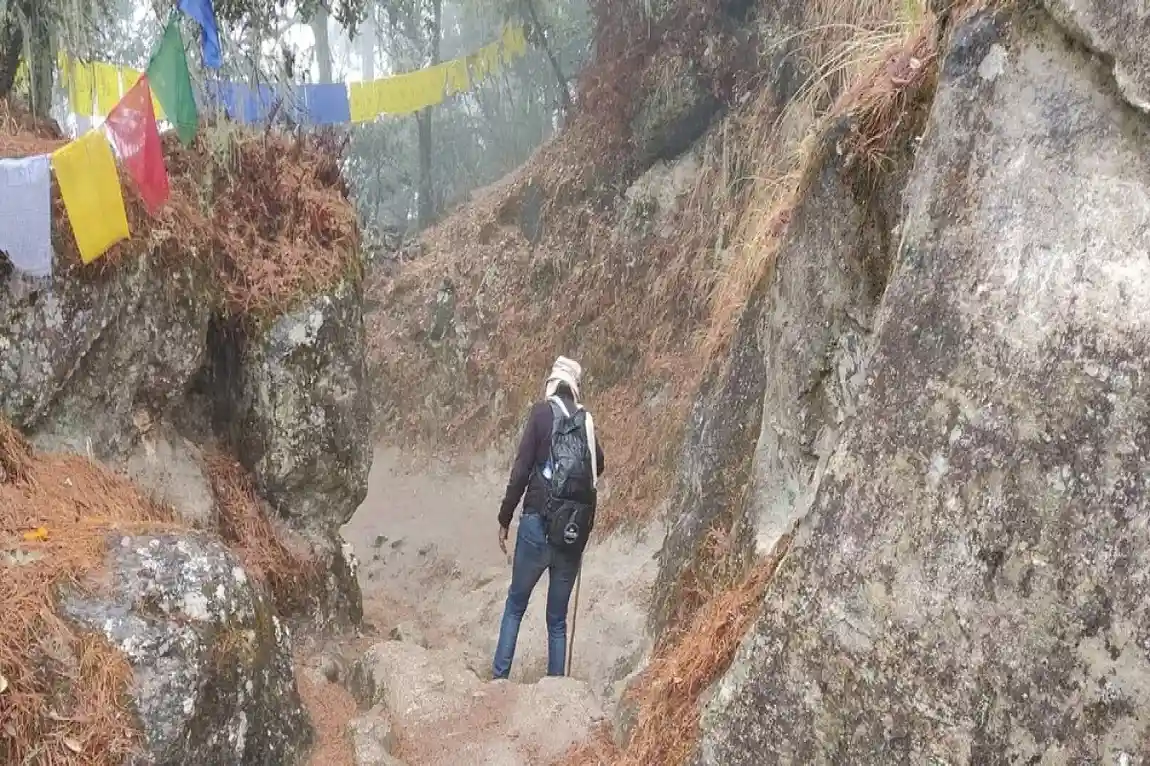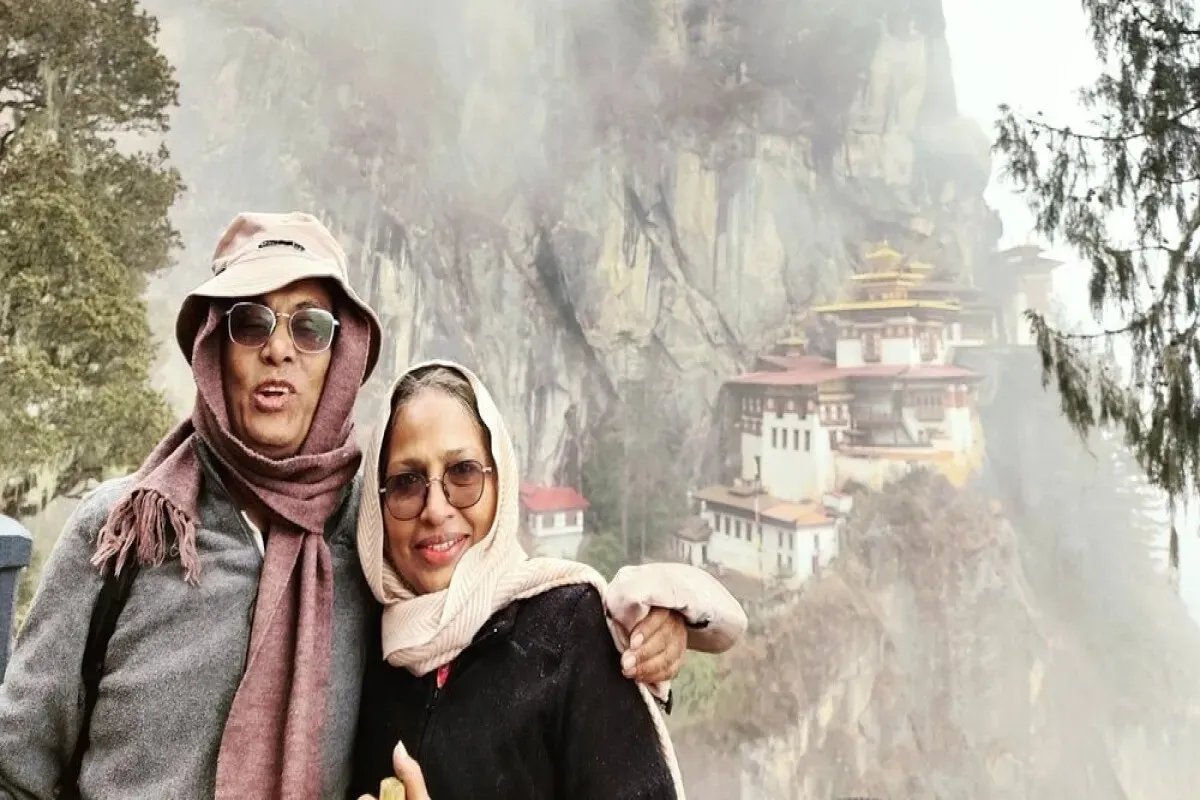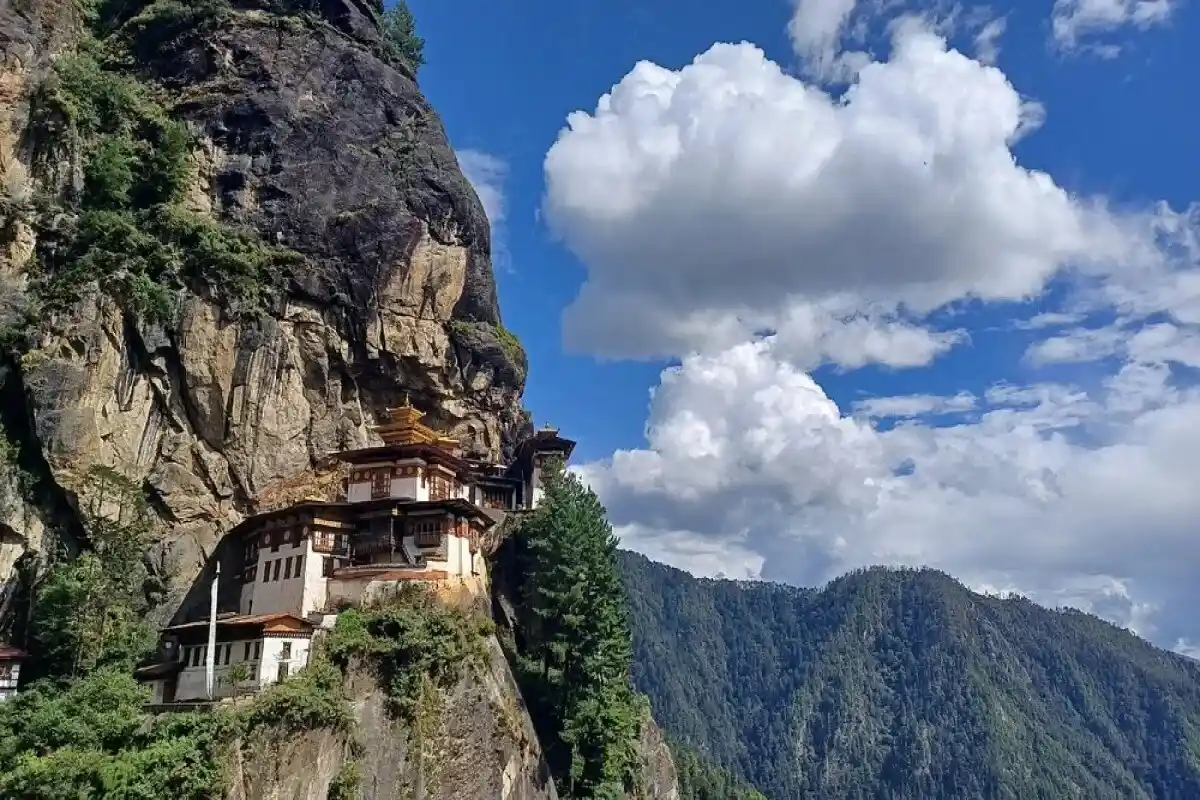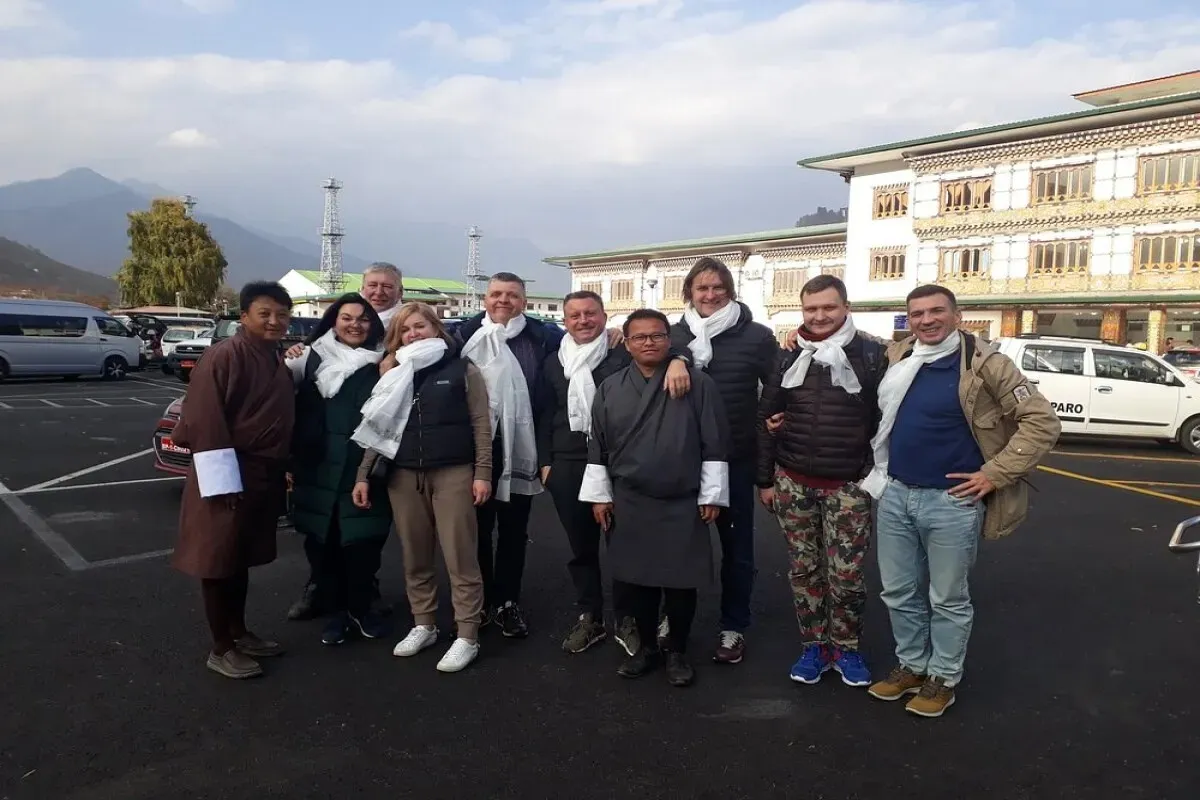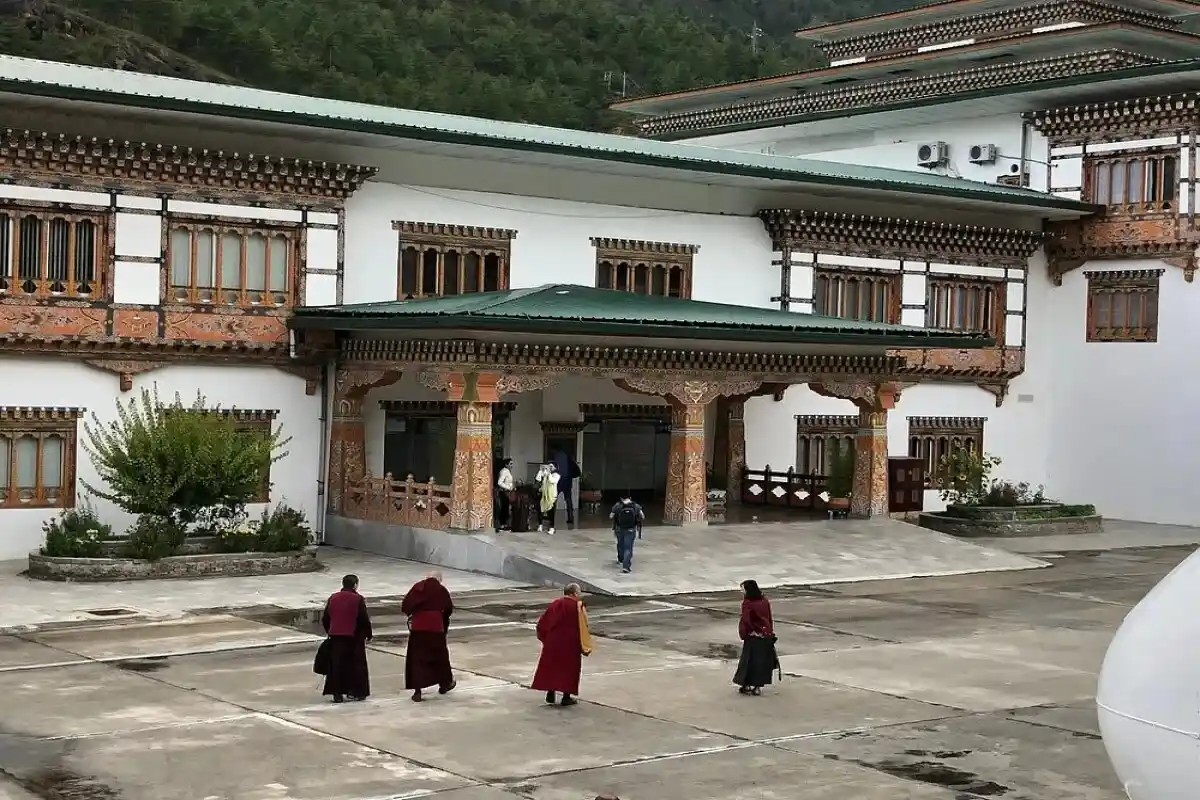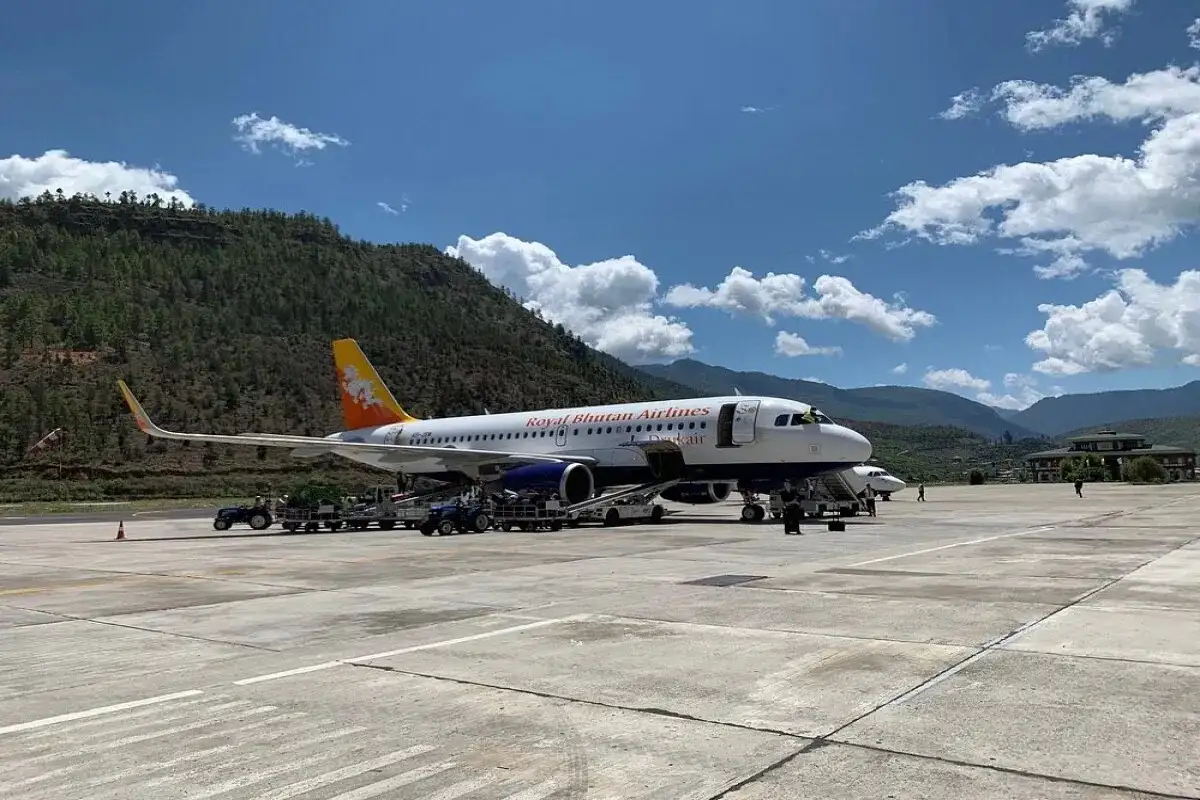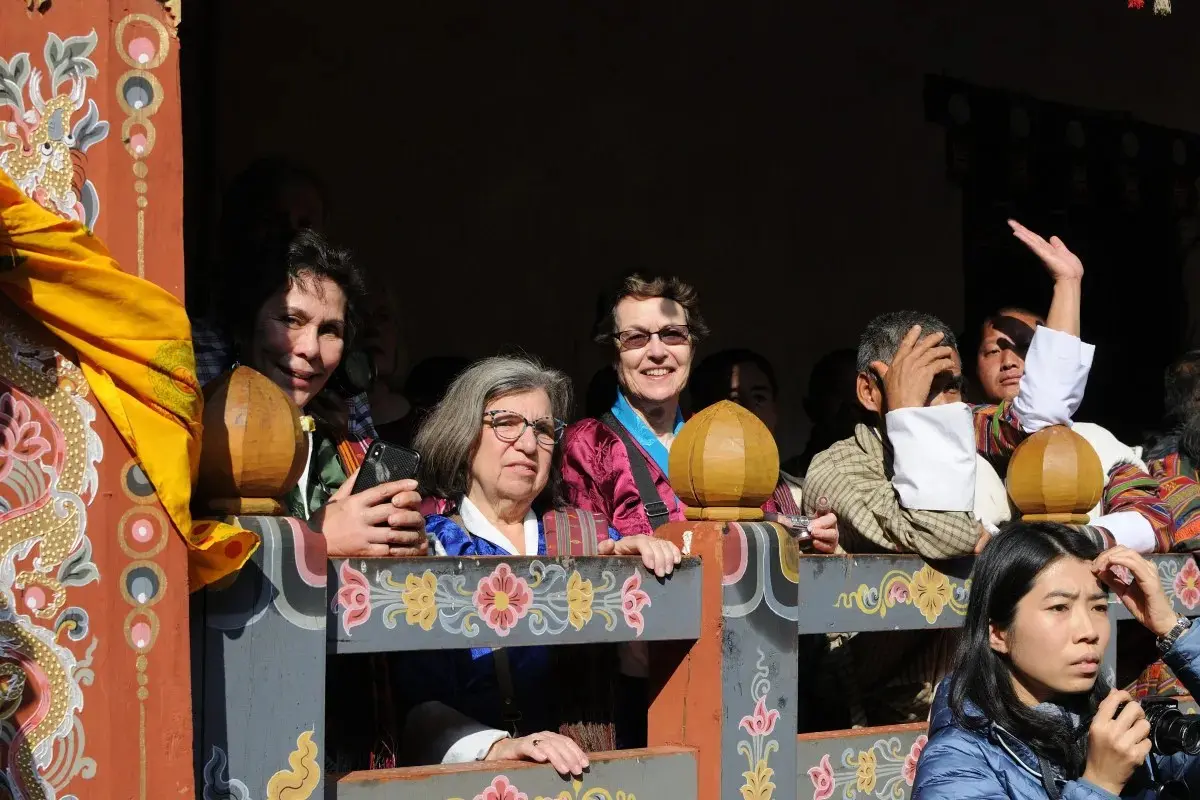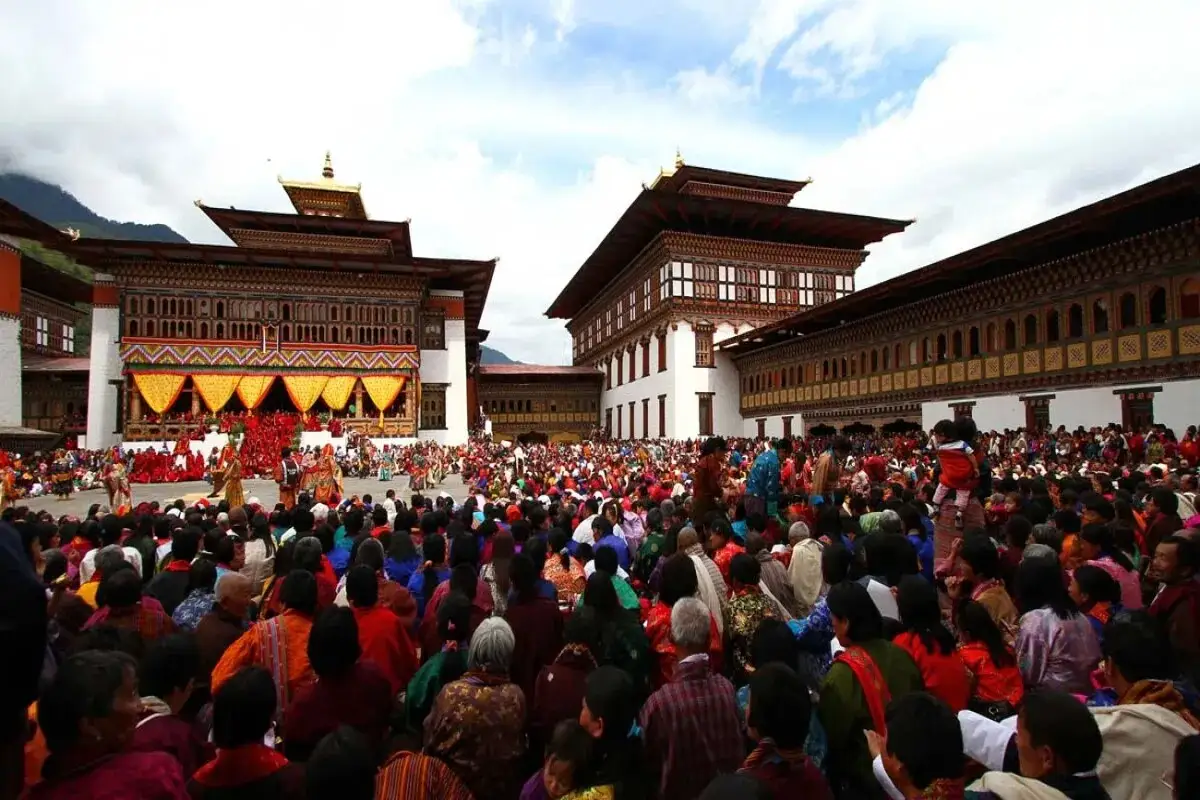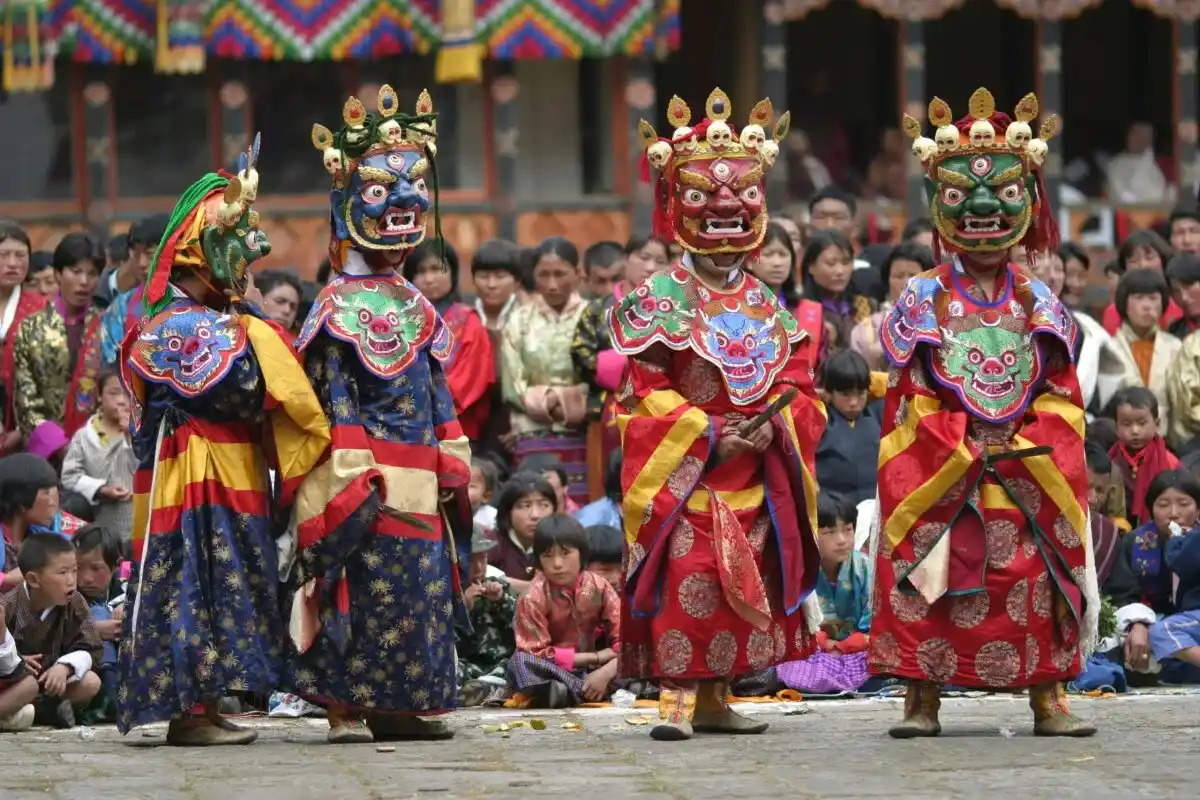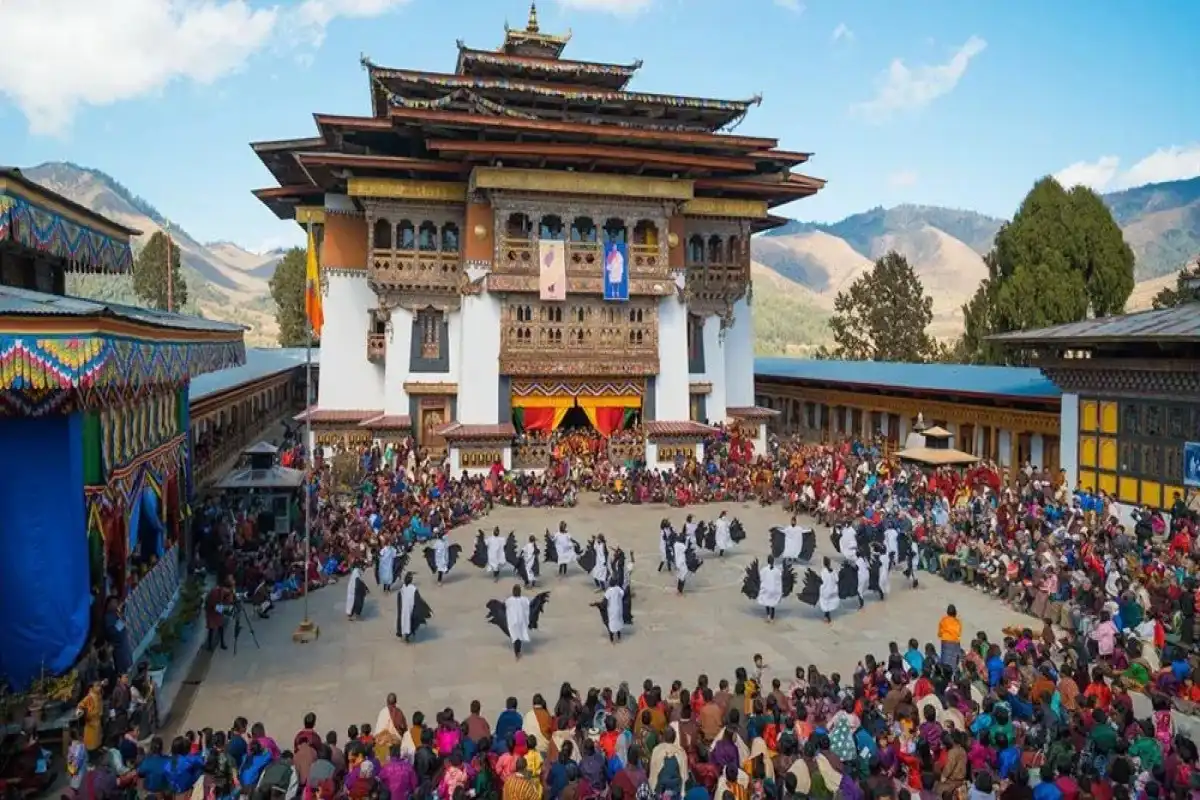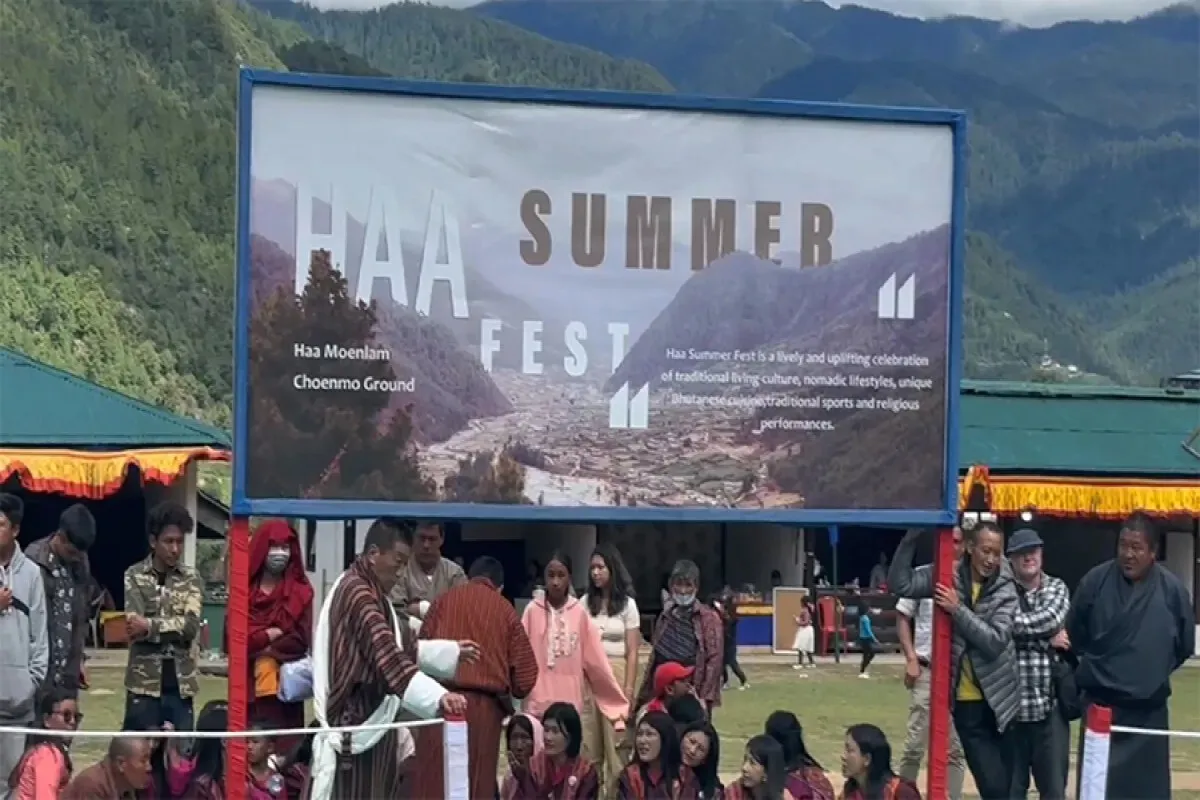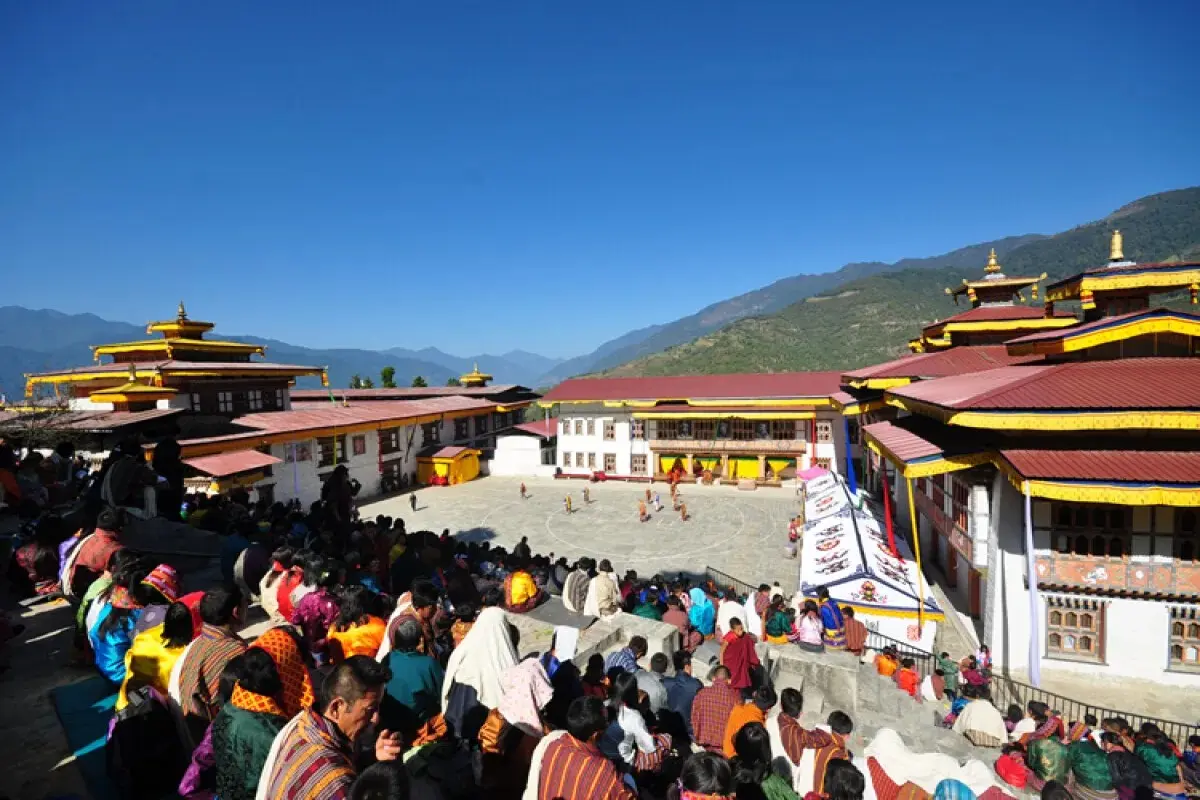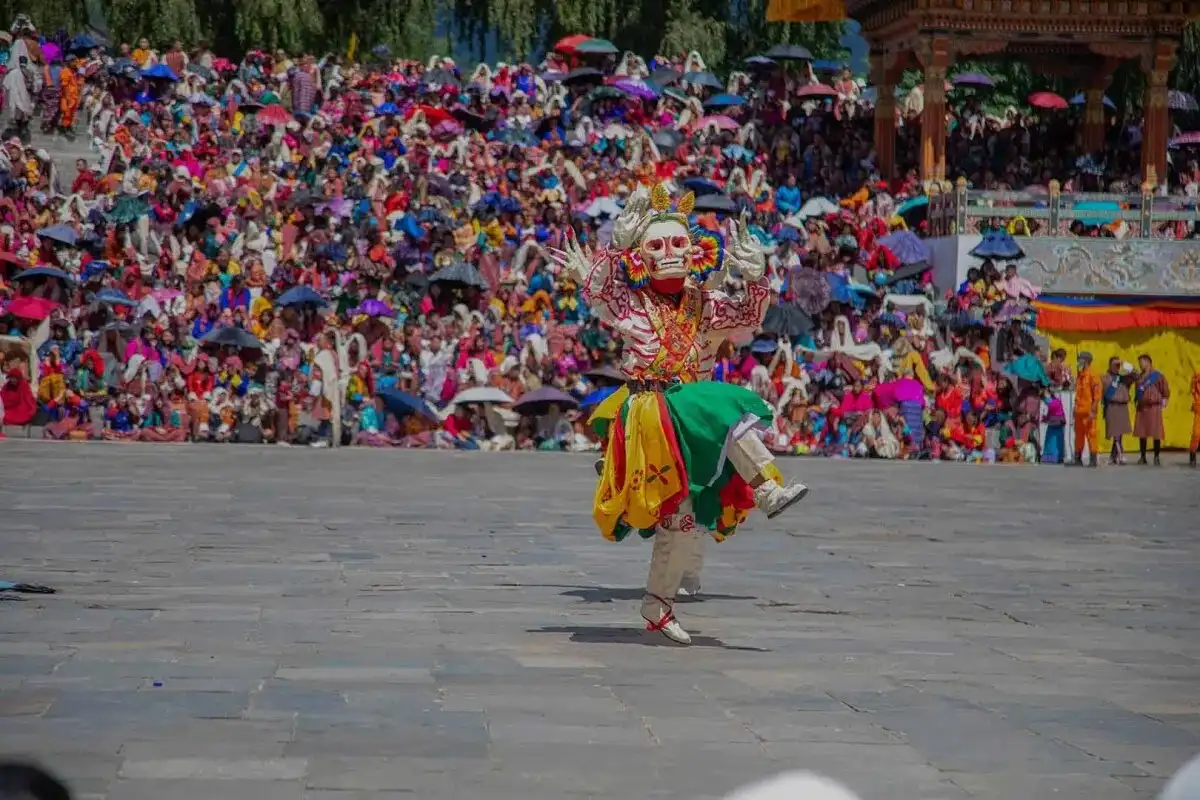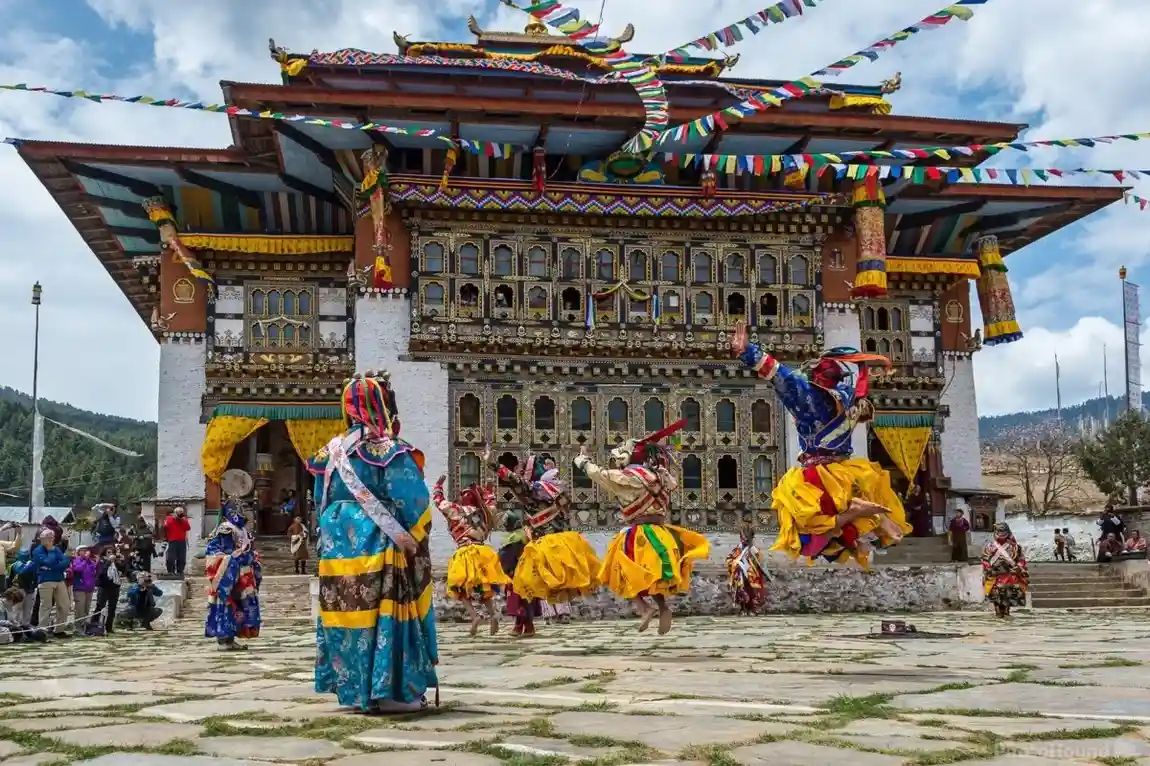Haa Festival Tour- 9 days - 9 Days
Start your beautiful journey into the field of Bhutan with our Haa Winter Festival Tour of 9 days, which is the best combination of culture, celebration, and the untouchable beauty of the Himalayas. The Haa Winter Festival 2025, the live local event which celebrates the local customs with all their color (literally, judging by the festival costumes and traditional yak dances) and provides the feel of the genuine Bhutanese highland hospitality.
Highlights
- Visit Bhutan’s Sacred Monasteries and Dzongs
- Experience Yak and Horse Displays
- Explore Local Food and Culinary Delights
- Experience Daily Yoga, Meditation & Breathing Practices
- Cultural Interaction with Locals in Traditional Attire
- Experience Village life
Trip Overview
During nine memorial days, you'll get a chance to explore Bhutan's most holistic sites from Tiger's Nest Monastery in Paro to quiet and green valleys of Punakha to the capital of Bhutan, Thimphu. After, you'll move to the Haa region through the stunning Chele La Pass.
This Hike is especially designed for the individuals who are ready for spiritual travel, culture lover and for those who are seeking for meaningful connection, the tour provides a real-life experience of the great heritage in Bhutan, the local festivals and the beauty of this country- a great winter get away to one of the few remaining great Himalayan kingdoms in the world.
Highlights of the Haa Winter Festival
The Haa Winter Festival- It is the colorful festival of the culture of the mountains, which brings to life the special customs, food, and traditions of the Haa valley of Bhutan. Taking place during winters in one of the most isolated parts of Bhutan, the festival is sort of a rare chance to bond with the nomadic life and people with the deep spirituality of this nation.
Visit Bhutan’s Sacred Monasteries and Dzongs
Explore various kinds of sacred Monasteries and dzongs. Visit Bhutan's early temple, the historical Kyichu Lhakhang, visit the Tiger Nest Monastery, and have some relaxing meditation with the monks. Go on to Chimi Lhakhang to get blessings in the temple of fertility. Also visit Chimi Lhakhang and seek blessings at the temple. This environment provides all the information about the country where you observe stunning architecture in peaceful surroundings, which shows the cultural and spiritual heritage of the nation.
Experience Yak and Horse Displays.
Become involved in the royal ceremony of traditional yak and horse performances, where power, flexibility, and other cultural values of these sacred animals are clearly illustrated. It is full of spectacular horseman performances and exotic processions by skilled jockeys, as well as traditional sports that unfold hundreds of years of history. These exhibitions are suitable to be visited by people of all ages, where the bond between human and animal relationship is quite soulful. It is a rare occasion because it is placed in a scenic setting, which is amazing.
Explore Local Food and Culinary Delights
Try various tasty dishes made by the local citizens with fresh and locally grown ingredients, from spicy to sweet items. Explore different local food, which will provide you with the best experience and also capture the heart of culture and tradition. Every bite is a traditional item and a reminder of palatability, whether a person enjoys a street treat or a home-made meal. The culinary adventure in Bhutan is worth it.
Experience Daily Yoga, Meditation & Breathing Practices
Take part in yoga classes that smoothly combine body and mind, while bringing balance, clarity, and peace of mind with you. An excellent way to centre yourself in Bhutan’s serene environment. Learning some poses of yoga will lead us to a Positive attitude, also promote awareness, decrease stress level, and make our lives healthier and happier. People of various degrees of experience admit regularly that the field makes them feel stable, like they just got a new life, and strengthens their concentration.
Cultural Interaction with Locals in Traditional Attire
Interact with local people in their real world by attending to them when they are in their traditional attire. Exchange stories, learn local customs, and discover more about the place. Such interactions are not meaningless, as they create a bond with each other and mutual respect, providing insight into everyday life and the traditions that predetermine it.
Experience Village life
Explore the beauty of local societies and their traditions, and get information about their daily activities like farming, cooking, and various kinds of craft making. Get out of the hectic schedule of modern life and get into the vibrant village life. This total experience is an escape, fulfills a need to experience something real, cultural, and a feeling of gratefulness and respect towards a more relaxed and interdependent style of life.
Local Cuisine and Culinary Experience in the Haa Winter Festival
At the same time, ara (rice wine) is normally shared during festivities. These are heavy, home-made meals which not only provide warmth to the body in the low altitude of the mountains in Haa but also create a greater appreciation of the agricultural history in the area as well as the hospitable attitude of the people.
Things to do in the Haa Winter Festival
During the Haa Winter festival, you get to experience various lively games like archery, tug-of-war, which help to make a good, friendly relationship in the community. Enjoy the beauty of folk songs and mask dances, including the famous Cham and Yak dances, which are also danced in regional colorful dresses. Enjoy traditional foods such as hoentay dumplings and the Ema Datshi prepared with thick yak cheese, and see how yaks are milked and butter produced live. It is also the chance to appreciate the native Nublang cattle, take a yak ride, and browse through traditionally made products like woven articles, Thangka paintings, and yak-hair tents. To summarize, the festival is not only an interesting and delightful discovery of Haa Valley winter culture but also an agricultural way of life at its rural roots.
When and where Haa Winter Festival celebrated?
Haa Winter Festival, or Haa Tshechu, as it is referred to, is a very prestigious annual celebration carried out in the courtyard of Lhakhang Karpo within the scenic Haa Valley. It is a 3-day-long festival which is usually on the 8th, 9th, and 10th of the 9th month of the Bhutanese lunar calendar, but which changes depending on lunar and solar calculations. Taking place with the stunning landscape of alpine mountains and the holy White Temple in the shade, the festival is a representation of extreme spirituality and unity between people, as a celebration, a rite which shows respect toward the long-standing customs of Bhutan.
Conclusion
A visit to Bhutan, and ideally during the Haa Winter Festival, is a unique experience of cultural involvement and spiritual enlightenment. Visitors not only get the benefit of worshiping sacred places like Kyichu Lhakhang and the Tiger Nest, but also they do get to spend time in the celebrations of the festival. Any experience, whether it is enjoying local food, doing yoga, or just admiring the views of the Alps, helps you to understand the vast cultural background of Bhutan. The friendliness of the people, the ring of tradition, and the calmness of the countryside produce a strong impression. The trip here, therefore, becomes more than just the experience of traveling; it will be an intellectual experience to a culture that places its focus on balance, harmony, and respect for both physical and spiritual systems.
During nine memorial days, you'll get a chance to explore Bhutan's most holistic sites from Tiger's Nest Monastery in Paro to quiet and green valleys of Punakha to the capital of Bhutan, Thimphu. After, you'll move to the Haa region through the stunning Chele La Pass.
This Hike is especially designed for the individuals who are ready for spiritual travel, culture lover and for those who are seeking for meaningful connection, the tour provides a real-life experience of the great heritage in Bhutan, the local festivals and the beauty of this country- a great winter get away to one of the few remaining great Himalayan kingdoms in the world.
Highlights of the Haa Winter Festival
The Haa Winter Festival- It is the colorful festival of the culture of the mountains, which brings to life the special customs, food, and traditions of the Haa valley of Bhutan. Taking place during winters in one of the most isolated parts of Bhutan, the festival is sort of a rare chance to bond with the nomadic life and people with the deep spirituality of this nation.
Visit Bhutan’s Sacred Monasteries and Dzongs
Explore various kinds of sacred Monasteries and dzongs. Visit Bhutan's early temple, the historical Kyichu Lhakhang, visit the Tiger Nest Monastery, and have some relaxing meditation with the monks. Go on to Chimi Lhakhang to get blessings in the temple of fertility. Also visit Chimi Lhakhang and seek blessings at the temple. This environment provides all the information about the country where you observe stunning architecture in peaceful surroundings, which shows the cultural and spiritual heritage of the nation.
Experience Yak and Horse Displays.
Become involved in the royal ceremony of traditional yak and horse performances, where power, flexibility, and other cultural values of these sacred animals are clearly illustrated. It is full of spectacular horseman performances and exotic processions by skilled jockeys, as well as traditional sports that unfold hundreds of years of history. These exhibitions are suitable to be visited by people of all ages, where the bond between human and animal relationship is quite soulful. It is a rare occasion because it is placed in a scenic setting, which is amazing.
Explore Local Food and Culinary Delights
Try various tasty dishes made by the local citizens with fresh and locally grown ingredients, from spicy to sweet items. Explore different local food, which will provide you with the best experience and also capture the heart of culture and tradition. Every bite is a traditional item and a reminder of palatability, whether a person enjoys a street treat or a home-made meal. The culinary adventure in Bhutan is worth it.
Experience Daily Yoga, Meditation & Breathing Practices
Take part in yoga classes that smoothly combine body and mind, while bringing balance, clarity, and peace of mind with you. An excellent way to centre yourself in Bhutan’s serene environment. Learning some poses of yoga will lead us to a Positive attitude, also promote awareness, decrease stress level, and make our lives healthier and happier. People of various degrees of experience admit regularly that the field makes them feel stable, like they just got a new life, and strengthens their concentration.
Cultural Interaction with Locals in Traditional Attire
Interact with local people in their real world by attending to them when they are in their traditional attire. Exchange stories, learn local customs, and discover more about the place. Such interactions are not meaningless, as they create a bond with each other and mutual respect, providing insight into everyday life and the traditions that predetermine it.
Experience Village life
Explore the beauty of local societies and their traditions, and get information about their daily activities like farming, cooking, and various kinds of craft making. Get out of the hectic schedule of modern life and get into the vibrant village life. This total experience is an escape, fulfills a need to experience something real, cultural, and a feeling of gratefulness and respect towards a more relaxed and interdependent style of life.
Local Cuisine and Culinary Experience in the Haa Winter Festival
At the same time, ara (rice wine) is normally shared during festivities. These are heavy, home-made meals which not only provide warmth to the body in the low altitude of the mountains in Haa but also create a greater appreciation of the agricultural history in the area as well as the hospitable attitude of the people.
Things to do in the Haa Winter Festival
During the Haa Winter festival, you get to experience various lively games like archery, tug-of-war, which help to make a good, friendly relationship in the community. Enjoy the beauty of folk songs and mask dances, including the famous Cham and Yak dances, which are also danced in regional colorful dresses. Enjoy traditional foods such as hoentay dumplings and the Ema Datshi prepared with thick yak cheese, and see how yaks are milked and butter produced live. It is also the chance to appreciate the native Nublang cattle, take a yak ride, and browse through traditionally made products like woven articles, Thangka paintings, and yak-hair tents. To summarize, the festival is not only an interesting and delightful discovery of Haa Valley winter culture but also an agricultural way of life at its rural roots.
When and where Haa Winter Festival celebrated?
Haa Winter Festival, or Haa Tshechu, as it is referred to, is a very prestigious annual celebration carried out in the courtyard of Lhakhang Karpo within the scenic Haa Valley. It is a 3-day-long festival which is usually on the 8th, 9th, and 10th of the 9th month of the Bhutanese lunar calendar, but which changes depending on lunar and solar calculations. Taking place with the stunning landscape of alpine mountains and the holy White Temple in the shade, the festival is a representation of extreme spirituality and unity between people, as a celebration, a rite which shows respect toward the long-standing customs of Bhutan.
Conclusion
A visit to Bhutan, and ideally during the Haa Winter Festival, is a unique experience of cultural involvement and spiritual enlightenment. Visitors not only get the benefit of worshiping sacred places like Kyichu Lhakhang and the Tiger Nest, but also they do get to spend time in the celebrations of the festival. Any experience, whether it is enjoying local food, doing yoga, or just admiring the views of the Alps, helps you to understand the vast cultural background of Bhutan. The friendliness of the people, the ring of tradition, and the calmness of the countryside produce a strong impression. The trip here, therefore, becomes more than just the experience of traveling; it will be an intellectual experience to a culture that places its focus on balance, harmony, and respect for both physical and spiritual systems.
Short Itinerary
Arrive in Paro, drive to Thimphu, evening cultural visit in a local community
Sightseeing in Thimphu and explore local craft bazaar
Drive from Thimphu to Punakha , visit Punakha Dzong and Chimi Lhakhang.
Travel from Punakha to Haa ,enjoy mountain views and reach Haa Valley.
Attend Haa Winter Festival and local cultural interactions.
Second day of Haa Winter Festival and visit Lhakhang Karpo.
Return to Paro ,evening shopping or rest in Paro.
Hike to Tiger’s Nest Monastery , enjoy stunning views and spiritual experience.
Departure from Paro Airport .
Haa Festival Tour- 9 days Itinerary
You will be received by your guide, who awaits to meet you at the Paro International Airport for a welcome and offer you a traditional Bhutanese scarf. After this, you start the 2-hour ride to Thimphu, with the breathtaking scenery. On your arrival in Thimphu, go to your hotel and check in there. During the evening, visit one of the communities nearby to understand how people of Bhutan live their lives, in terms of culture and tradition. Have dinner and rest in your respective hotel.
The next day, after having an early breakfast, move to explore Buddha Dordenma, from where you can see the view of Thimphu valley. Explore other heritage sites like Memorial Chorten, where people used to visit for their daily prayer, which is one of the most believed spiritual sites. Monastic body and royal offices can be observed in Tashichho Dzong. Don't forget to visit here. After returning, explore the Folk Heritage Museum to experience the traditional culture and the local craft bazaar for handmade items. Go back to the hotel, enjoy your dinner, and rest well.
On this day, you will be travelling out of Thimphu and to the Dochula Pass, which is an elevation of 3,100 meters. At arrival, you can enjoy a vast view of 108 white stupas and a wide-ranging landscape of the range of Himalayas. Stop for a while to capture this panoramic view and, more importantly, to have a breath of fresh mountain air. On getting to Punakha, stop by to see the marvelous Punakha Dzong, one of the most attractive forts that is located between two rivers. Thereafter, go on a serene walk through rice paddy fields to the unique Fertility Temple of Chimi Lhakhang, the temple of Divine Madman. You arrive at the end of the journey in a quiet rural atmosphere and a historical background.
Early in the morning, you will head to Wangdue Phodrang through the Punakha direction, enjoy the view of the trail surrounded by well-cultivated land, and the scenes of daily life in the local villages. The trip resumes on Chele La Pass, which is at 3,988 metres and is the highest point in Bhutan. You will get a chance to observe Mt. Jomolhari and various fluttering prayer flags before reaching beautiful and peaceful Haa Valley. Then you can enter the quiet Ha Valley, which is the favourite due to the beauty of nature and the typical Bhutanese shelter. After arrival in your accommodation, spend the first evening resting and adjusting to the new surroundings, as you brace yourself for the impending fun of the Haa Winter Festival.
Today, the day when the Haa winter festival is going to start finally. Now, you will visit the Haa Winter Festival, which is the colorful showcase of the tradition and culture of Bhutan. Join and enjoy folk dances, yak and horse processions, and different kinds of performances related to Bhutanese culture, which will make it unique from others. Experience various lively games like archery and khuru, where you can see the great participation of locals. The village has a holiday mood, welcoming nature. People wear the best costumes of the traditional style, and welcome visitors with open hearts. You can interact with the locals, indulge in homemade goodies, and have an understanding of their way of life.
On the sixth day of the tour, or the second day of the winter festival, you will get to experience various kinds of holistic dances wearing masks, various singing competitions, and get the chance to listen to various sacred stories by the monks and other locals. Explore various traditional customs of Bhutan, which can be seen there, including displays and shopping for different handicraft and souvenir items. Afterwards, you will visit Lhakhang Karpo, which is also known as the White Temple and can be reached easily.
Good morning from Haa, have your breakfast with a cup of tea, and spend your leisure in the valley. Today, you will leave Haa valley and proceed to Paro through Chele La Pass, which is the highest and drivable pass in Bhutan. On the way, it is advisable to make a halt in Kyichu Lhakhang, one of the oldest temples in Bhutan, which was built by King Songtsen Gampo in the 7th century. When you reach Paro, you can enjoy shopping in the local markets, or you can simply take a rest in your respective hotel.
On the second last day of the tour, wake up early and be ready to participate in a hike to Taktsang Monastery, which lies above the Paro valley and takes approximately 4 to 5 hours to make a round trip. It is also believed that there used to be a cave of tigers in about thirteenth century. A sacred site on a shelf is a special sacred or spiritual place constructed up high on a cliff top, which gives you a feeling of peace, power, and closeness to the sky. Enjoy various stunning views and explore the Tiger’s Nest Monastery. After a hectic hike to Tiger’s Nest, have your dinner and enjoy the final day of this trip with your fellows.
Wake up with fresh mountain air in Paro, have your farewell breakfast, and leave for the Airport with your guide and driver. Upon arrival at the Airport, it's time for final goodbyes with our guide and driver, along with the beautiful city. Have all your boarding passes and depart with the most unforgettable memories of Bhutan and the Haa Winter Festival.
Know Before You Travel
-
Significance of the Haa Winter Festival:
Haa Tshechu or Haa Winter Festival, as the event is known, has huge cultural and spiritual significance to people living in Haa Valley. The event is celebrated in the memory of Guru Rinpoche; it includes the sacred Mahasidhi mask dances (cham), music, and rituals to celebrate the victory of God over evil. It would be a good time to connect and pray in favor of survival as well as prosperity. The festival simultaneously retains a profound spiritual significance, and the festival is a celebration of the rich culture of the land. It helps create a bond of warmth among the members of the communities and gives the outsiders a unique experience of learning the vibrant traditions and strong beliefs of Bhutan.
Haa Festival Tour- 9 days Map
Download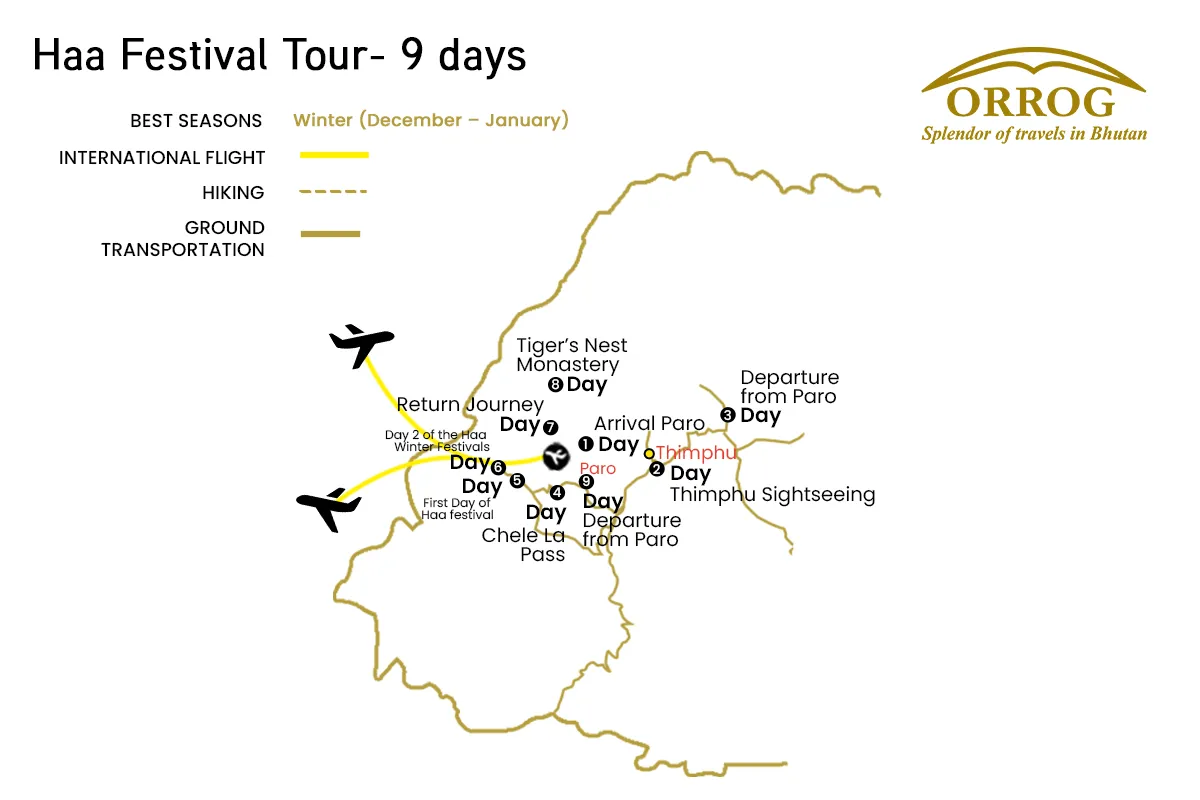
FAQs for Haa Festival Tour- 9 days
Haa Winter Festival is conventionally held on days eight, nine, and 10 of the ninth month of the Bhutanese lunar calendar, which fall during October in the Gregorian calendar.
We can see various things which can attract people, such as folk singing and different performances, various kinds of dishes, scary mask dance, and many more.
Haa Winter Festival in the actual sense is suitable for any age group. It provides a family-friendly setting with bright dancing scenes, loud music, and a colourful community feel. Cold weather and medium walking are to be expected by the attendees, though.
Try to wear comfortable and suitable clothes for the festival, and also carry a medium jacket for cool weather.
Yes, you can take the photos during the festival, but the flashes are forbidden, and ask the individual or monks before taking their picture.
You need a visa and all necessary permits for your trip. These documents can not be received on the day of your arrival, so they must be processed before coming here. After you book a trip with us, we will manage these papers for you. Your Bhutan visa is arranged by Orrog as part of the package.
The main way to come to Bhutan is through Paro International Airport, which is well-connected to cities like Bangkok, Delhi, Kathmandu, and Singapore. Most people arrive by air, but if you plan to come via road, you can enter through Phuentsholing, located on the southern border with India, which is the most commonly used entry point.
It is recommended to apply for the visa at least 20 days before your planned departure date so that there is enough time for processing your Bhutan visa, finalizing your itinerary, and arranging your guides and transportation. Although visa processing itself is relatively fast once payment is received, early preparation helps avoid delays and ensures availability, especially during peak seasons (spring and autumn).
You don’t require a passport-size photo for the visa, but it is wise to carry at least 2–4 recent passport-sized photographs during your trip. These may be needed for local permits, registration, or when applying for a local SIM card upon arrival in Bhutan.
Yes, you can lengthen your stay in Bhutan either before or after your trip. Bhutan’s tourism model requires visitors to pay a Sustainable Development Fee (SDF) and a daily package cost, so any extra days will involve additional charges. Extensions are a great opportunity to explore cultural sites in Paro, Thimphu, or even add another short trip or day hike.
Yes, Bhutan requires full tour payment in advance before your visa can be processed and issued. The government of Bhutan regulates this policy to ensure that all travel arrangements are confirmed through a licensed Bhutanese tour operator. We are a licensed tour operator that ensures you have everything you need for a trouble-free trip.
Any personal expenses are not covered in the package like:
- Tips for your guide and other staff
- Bottled drinks and snacks(personal expense)
- Souvenirs or local crafts
Credit cards are easily accepted in major cities like Paro and Thimphu. But in remote areas, you may not have access to a card or an ATM. So, it is best to carry some cash before heading for the trip.
Tipping is not mandatory, but it is a widely appreciated gesture and a customary way to show gratitude for good service. The tipping guideline would be to give USD 5-10 per day as a tip for the guides and other staff.
Paro International Airport is the only international airport in Bhutan. It is well connected by flights from cities like Bangkok, Delhi, Kathmandu, and Singapore.
Yes, airport pick-up and drop-off are included in the package. We will have your guide and driver meet you at the airport and transport you to your hotel.
While Bhutan's roads are mostly paved, some parts are narrow, winding, and occasionally affected by weather. However, we ensure your travel is safe, well-maintained, and driven by an experienced professional throughout the journey.
Once you arrive in Paro, we will arrange private ground transportation to the starting point as we pass through lush valleys and traditional villages. So, you don’t have to worry about any transportation services.
Yes, it is very safe to travel even with children in Bhutan. Roads are well-maintained, and the pace of travel is generally relaxed and child-friendly.
We will usually travel in comfortable, private vehicles with experienced drivers. All ground transportation is included in your package.
The Bhutanese Ngultrum is used in Bhutan. All local transactions during the trip will be in BTN.
US Dollars (USD) are generally accepted at larger hotels, souvenir shops, and tour operators, particularly in Paro and Thimphu. However, it’s advisable to convert your currency to BTN for general purchases in rural areas. Other currencies like the Euro or the Pound are not commonly accepted directly.
No, credit or debit cards are not accepted on the trip, as it takes you through remote regions with no banking or electronic payment access. All trip-related payments like accommodation, meals, permits, etc, are paid in advance.
You can exchange foreign currency at the Paro International Airport, at banks, or through licensed money changers in cities like Thimphu and Paro. It's best to exchange enough cash before heading out on the trip.
The national language is Dzongkha, but many Bhutanese also speak English. If you speak English and are worried about communicating with the local people, you will have your guide as a translator.
Yes, all licensed tour guides in Bhutan are required to speak fluent English. Many are also trained in other languages such as German, Japanese, or French. Communication during the trip will be smooth and clear in English.
Most signboards, tourist maps, and information brochures are written in English, especially in tourist destinations like Paro, Thimphu, and trailheads. Directional signs along routes are often labeled in both Dzongkha and English.
No, learning Dzongkha is not at all needed for the trip, but knowing a few basic words like "Kuzu zangpo la" (Hello) or "Kadrinche la" (Thank you) is a good way to interact with the locals.
Language barriers are minimal, as your guide will handle all communication with locals and support staff. Your guide will translate for you during your interaction with the locals.
To greet people, you can greet with locals “Kuzu zangpo la” (Hello) by performing a slight bow. Most common greetings include physical greetings, such as shaking hands less visible, especially in rural areas.
Yes, but remember to seek permission, especially when taking photos of monks, locals, or temples. Please note that clicking photos is not allowed at most religious sites.
Visitors should dress modestly and respectfully. This means:
- Covering shoulders and knees
- Removing hats and sunglasses
- Not wearing shorts or sleeveless tops
This applies to both men and women.
Yes, Bhutanese society is deeply rooted in Buddhism and tradition. Here are some key taboos:
- Do not point your feet at people or sacred objects
- Never touch anyone on the head, as it is considered sacred
- Walk clockwise around temples, stupas, and religious monuments
- Avoid public displays of affection
While gifts are not expected, they may be accepted graciously if given with respect. It is advisable to consult with the guide before giving out anything.
Bhutan typically uses Type C, Type D, and Type G electrical outlets. Standard safe voltage is 230V and frequency is 50Hz; therefore, ensure that your equipment is compatible with this voltage.
Indeed, it is highly advised to take along a universal travel adapter, particularly one to fit a variety of types of plugs, because plugs can be different in a hotel or a guesthouse.
Bhutan follows Bhutan Time (BTT), which is UTC/GMT +6 hours. This time zone remains consistent throughout the year.
No, Bhutan does not observe daylight saving time. The country maintains the same time year-round.
Bhutan is 30 minutes ahead of India. For example, 12:00 PM in India is 12:30 PM in Bhutan.
Yes, souvenirs can be bought in Paro or Thimphu before or after the trip.
Some popular souvenirs include hand-woven textiles (kira and gho fabric), prayer flags, thangka (religious scroll) paintings, handmade paper products, traditional masks, and Buddhist artifacts.
You can do some gentle bargaining in local street markets. However, in government-run shops and fixed-price stores, prices are usually non-negotiable.
Yes, you can easily purchase a SIM card upon arrival in Bhutan. We will assist you with the process, and you'll need a passport copy and a passport-sized photo.
No, internet access is not available during the trip. However, Wi-Fi is available in hotels in Paro and Thimphu before and after the trip.
Since the weather can be unpredictable and temperatures can vary drastically, layered clothing is essential. You should pack:
- Base layers (thermal tops and bottoms)
- Insulating layers like fleece or down jackets
- Waterproof and windproof outer layers
- Warm hats, gloves, and neck gaiters for freezing conditions
- Moisture-wicking socks and weatherproof trekking boots
Nighttime temperatures can be extremely cold, especially at high-altitude places. So you need to have enough clothing to keep you warm.
The weather is clear with mild daytime temperatures during spring and autumn.
Tsechu is a religious festival held in honor of Guru Rinpoche, featuring mask dances, rituals, and traditional performances. It's a colorful and spiritual experience for all ages.
Yes, festivals are family-friendly and offer a unique cultural experience for children, although large crowds can be overwhelming for very young kids.
Modest, respectful attire is recommended. Traditional Bhutanese dress (Gho/Kira) is encouraged and can be arranged for you.
Yes, all tours include certified, English-speaking guides who are knowledgeable in Bhutanese history and culture.
You can learn about the Bhutanese culture through local interactions, homestay visits, cooking classes, traditional art workshops, and attending local festivals and religious ceremonies.
Reviews & Ratings
-
Guarantee -
Thimphu,Bhutan -
975+17160228
Ready to Explore Bhutan?
Start your journey today and discover the magic of Bhutan with our expert guides and carefully crafted tours.
Book This Trip
-
No booking or credit card fees -
Best price guarantee -
Full customize trip
Ask a Question
Feel free to ask us anything about this tour. A travel expert will then get back to you as soon as possible
Ready to Explore Bhutan?
Start your journey today and discover the magic of Bhutan with our expert guides and carefully crafted tours.
